

Dear Readers,
Welcome to this issue of Obliterants, a space where science meets soul, medicine finds its mirror, and contributors express themselves in a multitude of forms
In the rush of clinical duties and daily demands, it is easy to lose connection with what makes us feel most human, most individual, and most expressive This magazine exists to give time, space, and honor that side of each and every one of us - to encourage our community to spend time to process, to create, and to convey our unique perspectives in the various mediums at our disposal
Here, you will find essays, poetry, photography, paintings, graphic design, recipes, reflections, and more that captivate, inspire, and hopefully spark discussion (if we are doing this right) We believe that the medical humanities are a core tenet of medicine This is a reminder that at the heart of every healthcare encounter is a story waiting to be heard, and at the heart of every medical professional is a multifaceted, colorful human being.
This is a particularly special edition as we bring the magazine back after a hiatus of 3 years Here we showcase current UM students and faculty, as well as alumni who contributed in the interim years
Whether you are a student just beginning your journey, a seasoned practitioner, an artist, an amateur, or a friend, we invite you to read with openness, to question deeply, and to carry these narratives with you as you move through the world.
Thank you for being here Thank you for reading Welcome to Obliterants
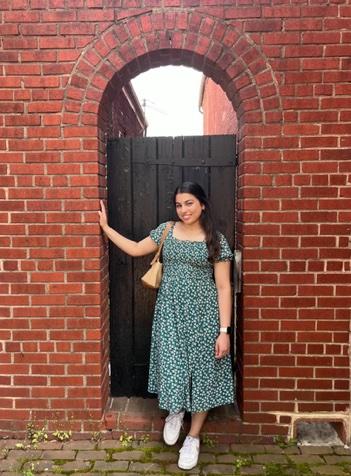
MEET THE TEAM MEET THE TEAM MEET THE TEAM

MEDICAL HUMANITIES INTEREST GROUP
ISHA HARSHE ISHA HARSHE
President MS2
Favorite Work: "Being Mortal" by Atul Gawande

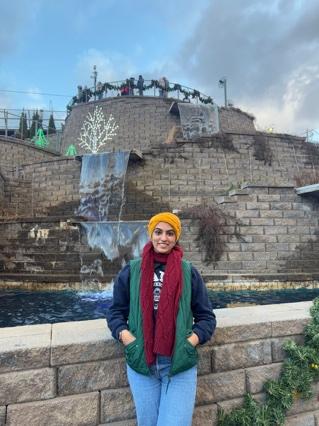
SNEHA AKURATI SNEHA AKURATI
Obliterants Editor in Chief
Arts Chair
MS2
Favorite Work: Anything Claude Monet
SHREYA PATHAK SHREYA PATHAK
Treasurer
MS1
Favorite Work: “Maybe You Should Talk to Someone” by Lori Gottlieb

NANCY SENOR NANCY SENOR

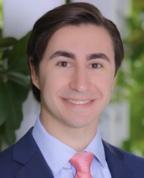
DR. GAURI AGARWAL DR. GAURI AGARWAL
Faculty Advisor
Associate Professor of Clinical Medicine
Associate Dean of Curriculum
RYAN GUILLEN RYAN GUILLEN
Vice President
MS4
Favorite Work: "Mountains Beyond Mountains” by Tracy Kidder

EMILY PARRA EMILY PARRA
Secretary Chair of Literature and Writing
MS2
Favorite Work: “ The Last Lecture” by Randy Pausch
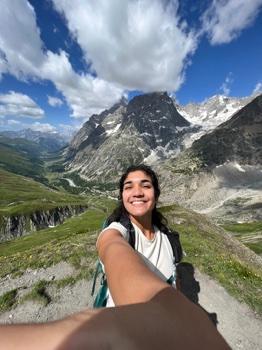
Performing Arts Chair
MS1
Favorite Work: “Fourth Wing” by Rebecca Yarros

SIMRAN PRAKASH SIMRAN PRAKASH
Senior Advisor
Culinary Chair
MS3
Favorite Work: “When Breath Becomes Air” by Atul Gawande
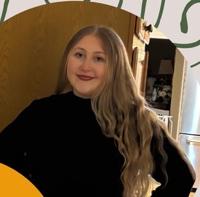
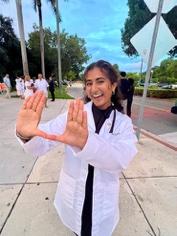
ERICA LAMKIN ERICA LAMKIN
Social Media Co-Chair
MS2
Favorite Work: “Surgery on the Front Line” by David Nott
AMI DAVE AMI DAVE
M1 Co-Liaison
MS1
Favorite Work: “Fresh Fruit, Broken Bodies” by Seth Holmes

MANAVII KUMAR MANAVII KUMAR
Medical Anthropology Chair
MS3
Favorite Work: “The Spirit Catches You and You Fall Down” by Anne Fadiman
ANNIKA DHAWAN ANNIKA DHAWAN
Medical History, Philosophy, & Ethics Chair
MS3
Favorite Work: “The Spirit Ambulance” by Scott Stonington

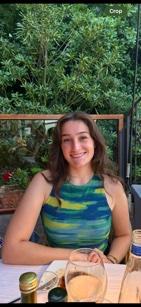
VISHNU NANDURI VISHNU NANDURI
Social Media Co-Chair
MS1
Favorite Work: “Your Heart is the Size of Your Fist” by Martina Scholtens
BELLA GUANCHE BELLA GUANCHE
M1 Co-Liasion
MS1
Favorite Work: Arnolfini Portrait by Jan Van Eyck
R T & P H O T O G R A P H Y
2 0 2 5 S U B M I S S I O N S
D o n ’ t J u d g e A B o o k B y H i s C o v e r 7
b y H o l l y L u t u r c o
“ Y e s , M i V i d a ? ” 8
b y S n e h a A k u r a t i
T h y r o i d B u t t e r f l i e s 9
b y S n e h a A k u r a t i
R o t a t i o n s I l l u s t r a t i o n s 1 0
b y I r i s K i m
T h e B a l a n c i n g A c t : S c i e n c e ,
M e d i c i n e , a n d t h e A r t o f H e a l i n g 1 1
b y E r i c a L a m k i n
Z e n M o m e n t s 1 2
b y N e e p P a t e l
R i d g e s & R i p p l e s 1 3
b y N e e p P a t e l
S u m m e r i n B e i j i n g 1 4
b y J u l i a S e e
S i s y p h e a n T a s k 1 5
b y A l l a n G eo r g e
M a r k e t s A r o u n d t h e W o r l d 1 6
b y S n e h a K a p i l
W i l d W o n d e r s 1 7
b y S i m r a n P r a k a s h
F l o r i d a 1 8
b y M a t t K i m
L i t t l e F r i e n d , F r o g s o n a S t e m ,
F r o g s o n a L e a f , H i d d e n b e a u t y 2 0
b y C a r l o s L a n g e
“ M y F i r e ” 2 2
b y Z a c h a r y S t a u b e r
P O E T R Y & R E F L E C T I O N S
W a t e r C y c l e 2 3
b y A i d a n T K u n j u
u n t i t l e d 2 4
b y A n n i k a D h a w a n
T h e C r o w n & h e r t i c s & h e r t i c s &
h e r t i c s 2 5
b y A n n i k a D h a w a n
M e s m e r i z e d 2 6
b y I s h a H a r s h e
C o m f o r t f r o m t h e r i v e r 2 8
b y D a n i e l l e A b d e n n o u r
h e r p a i n w a s n o t n o t h i n g 2 9
b y D a n i e l l e A b d e n n o u r
N o t E v e r y o n e C a n B e a D o c t o r 3 0
b y S u n n y G r e e n e
M U S I C & R E C I P E S
“ F r e e F a l l i n ” 3 1
b y M i l l e r M u s i c C o l l e c t i v e
C o r n S a l s a 3 2
b y H o l l y L u t u r c o
C r e a m C h e e s e S t u f f e d B a n a n a
B r e a d 3 3
b y Y a s m i n e M o h s e n i
E S S A Y S
M e m e n t o M o r i e t C o n s i l i u m 3 4
b y E m i l y P a r r a
W o o l , C e r e a l , a n d G u t s , O h M y ! 3 6
b y E
l i s e E d w a r d s
a l i g h t i n t h e d a r k : p o r t r a y a l o f
m e n t a l i l l n e s s i n n e x t t o n o r m a l 4 0
b y R e b e c c a S o i s t m a n n
2 0 2 5
S U B M I S S I O N S
DON’T JUDGE A BOOK BY HIS COVER
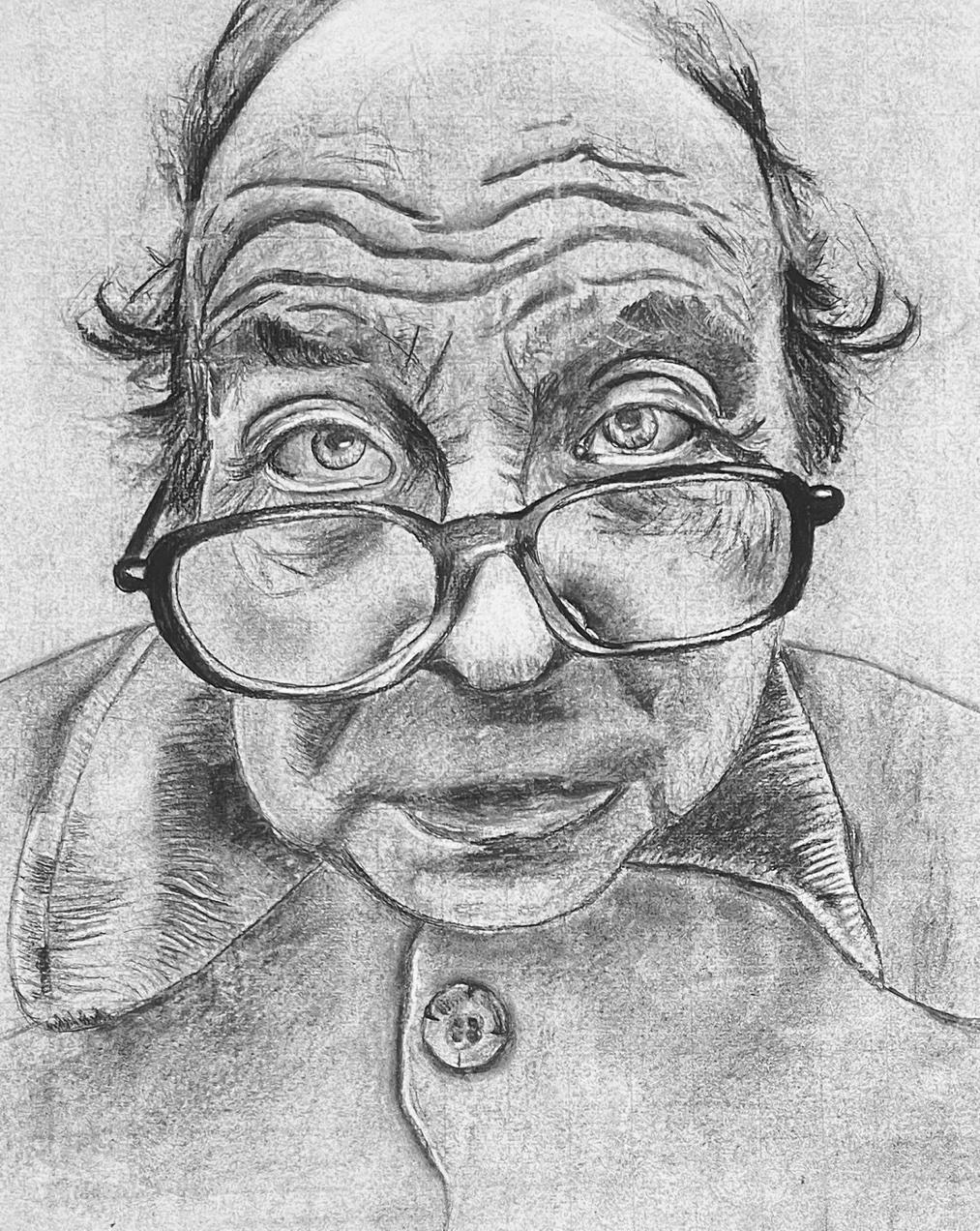

BY:
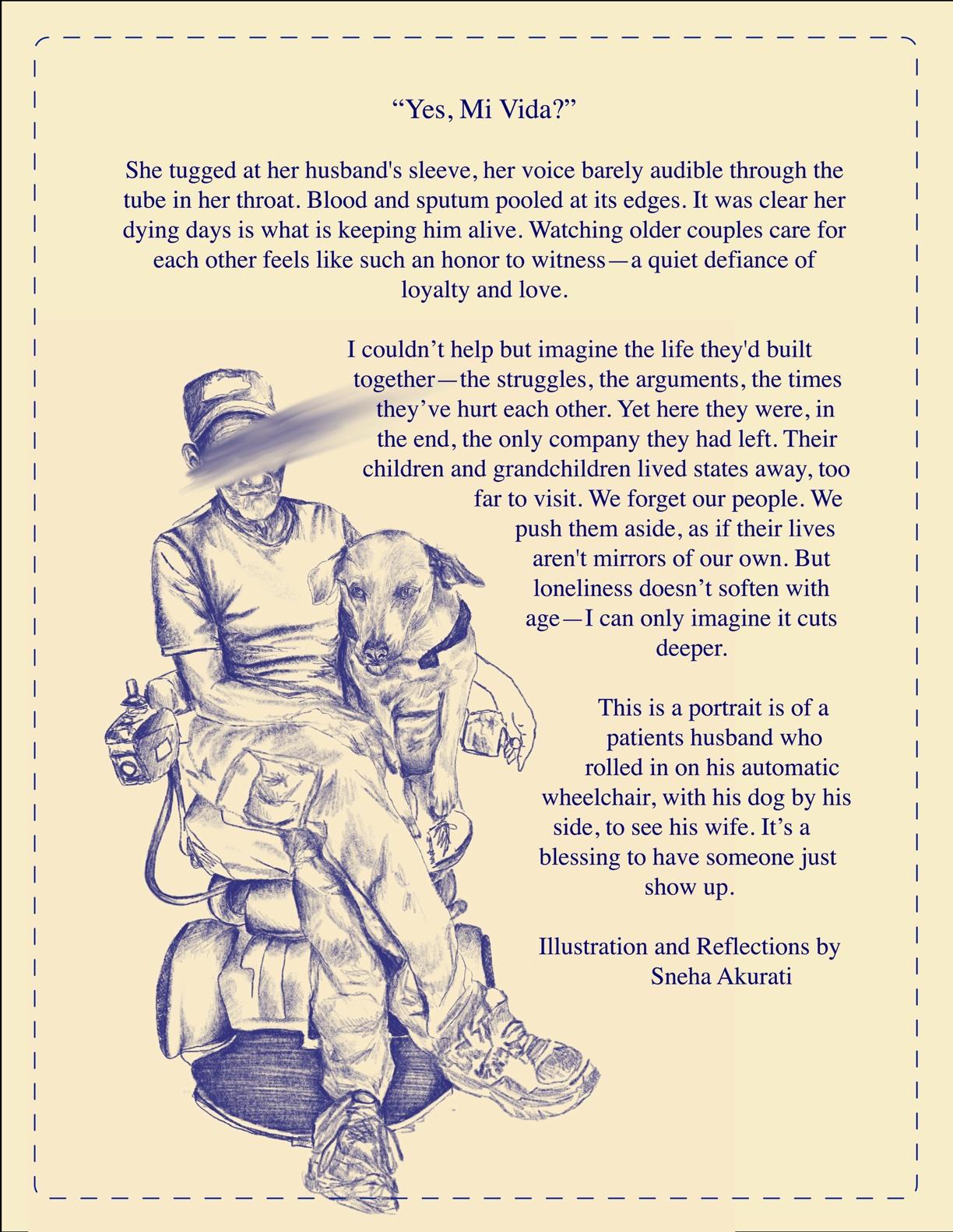
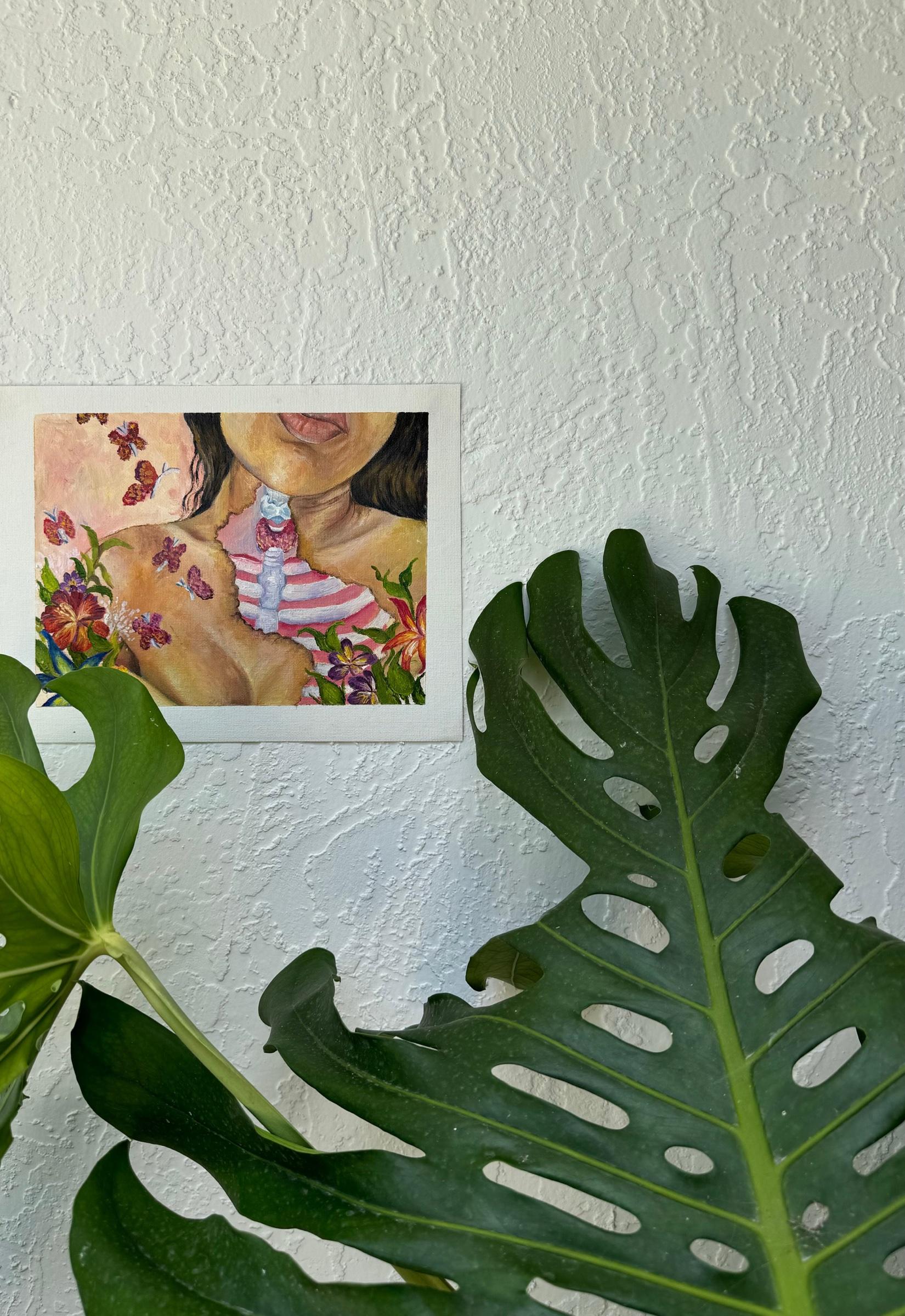
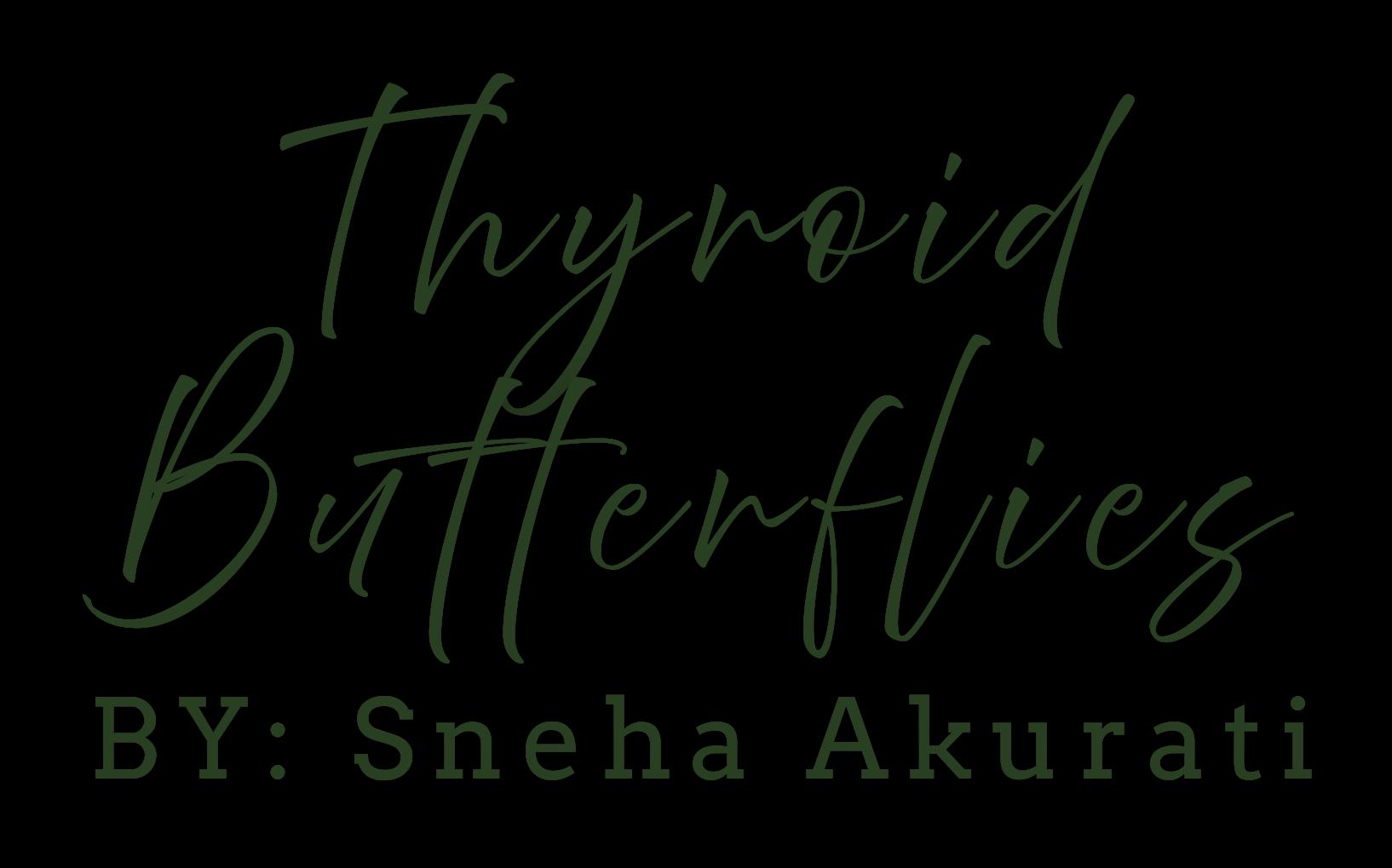

R o t a t i o n S I l l u s t r a t i o n S R o t a t i o n S I l l u s t r a t i o n S
I r i s i I r i s i
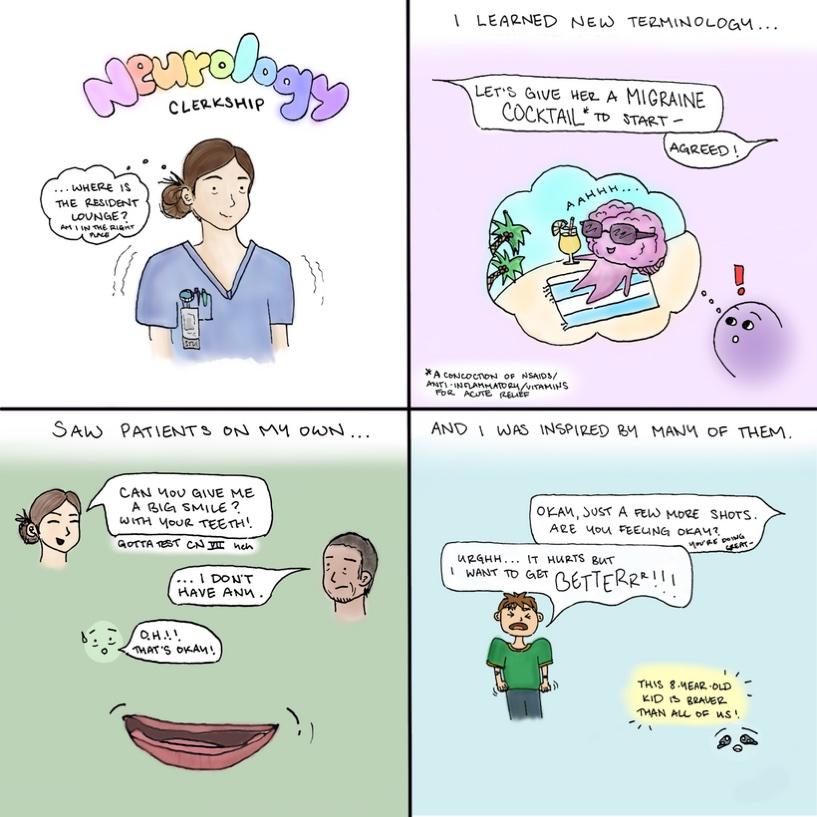
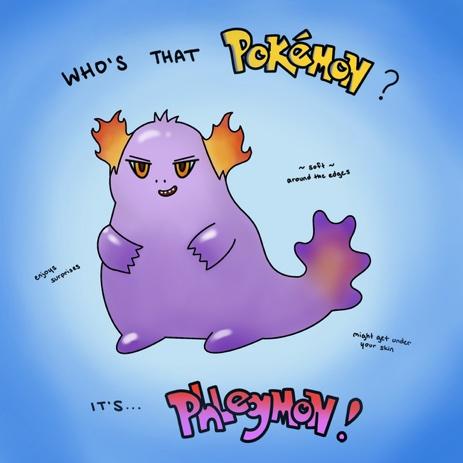
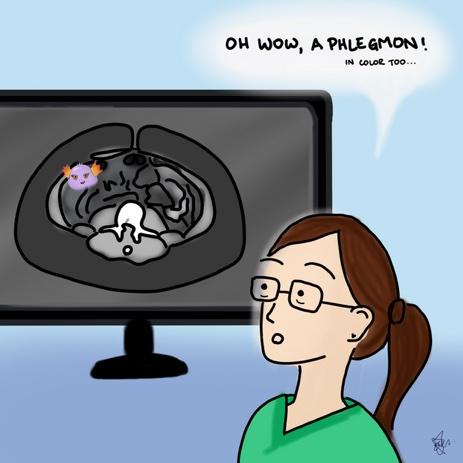
The Balancing Act: Science, Medicine, and the Art of Healing


By: Erica Lamkin
ZEN MOMENTS
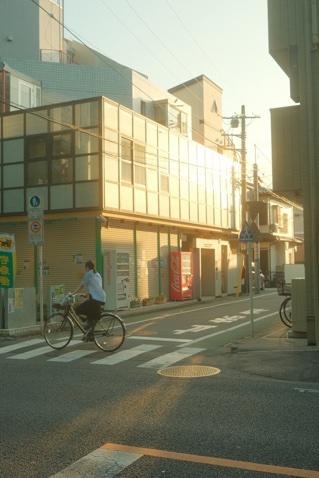

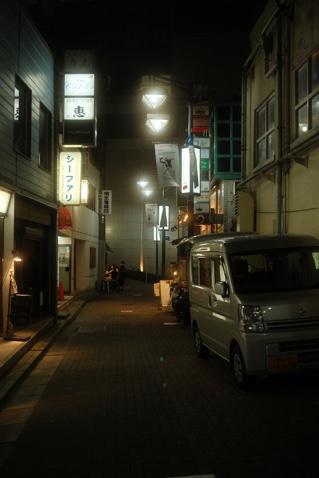




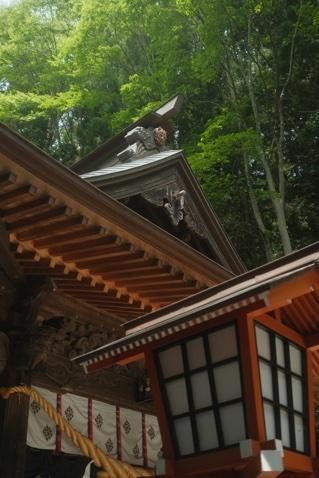

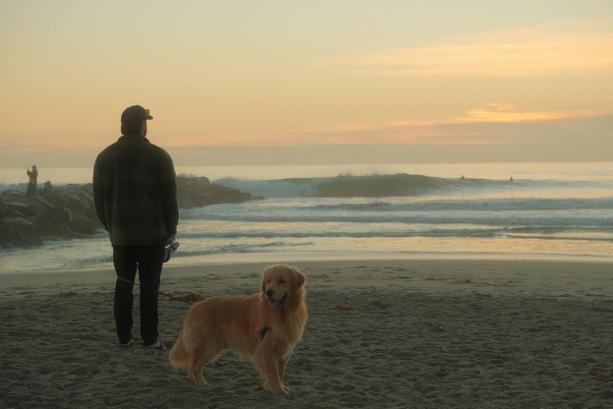

RIDGES & RIDGES & RIPPLES RIPPLES

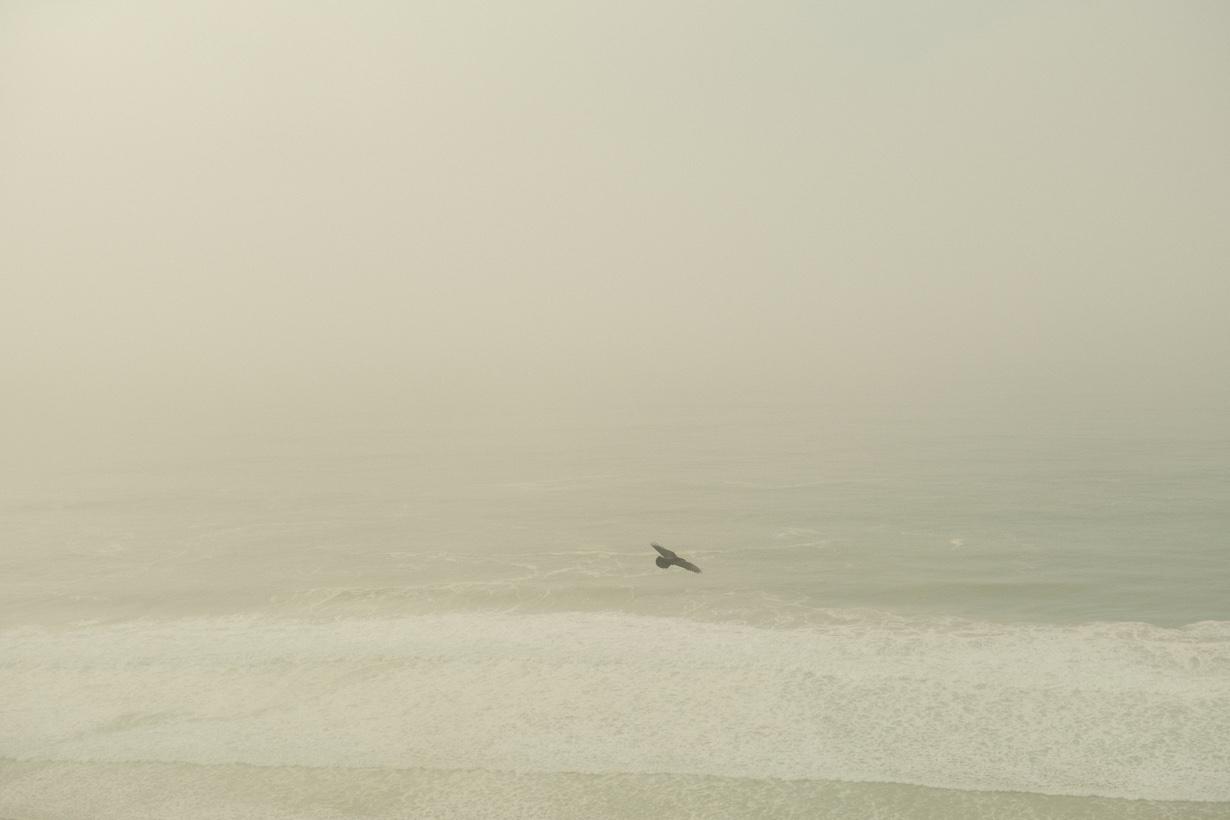

Neep Patel Neep Patel




MARKETS around the world
By sneha Ka pil
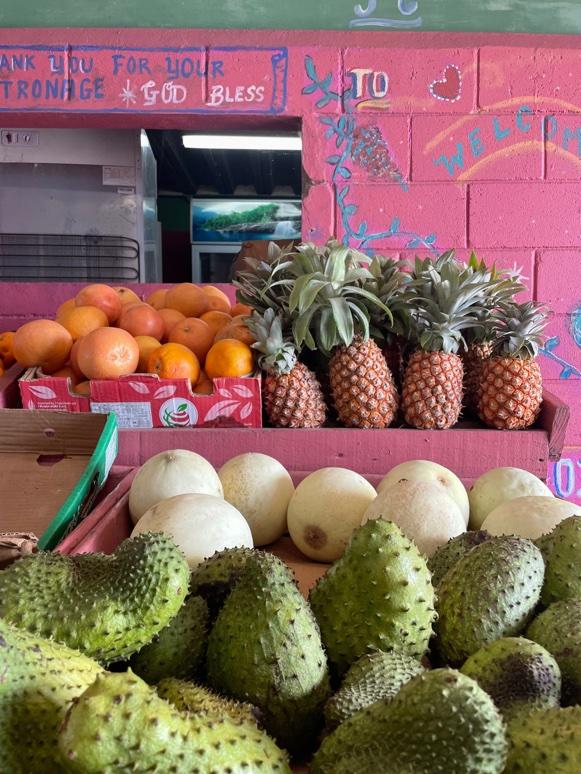
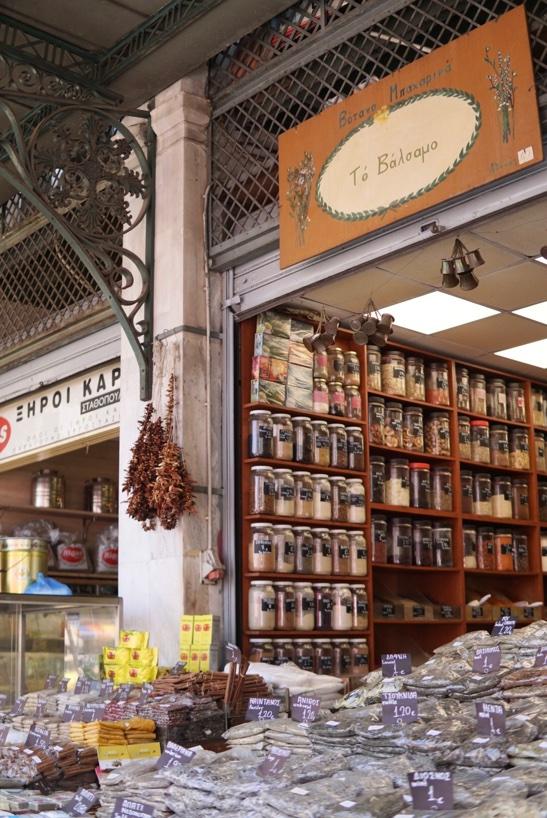


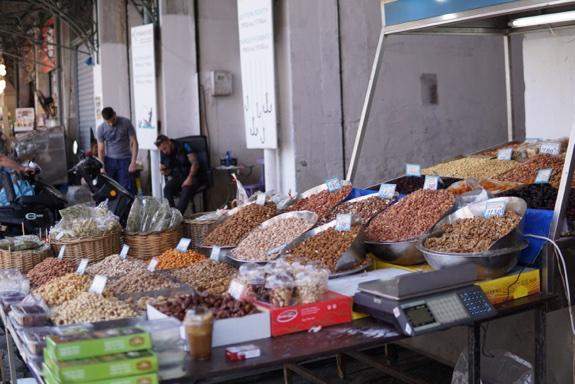






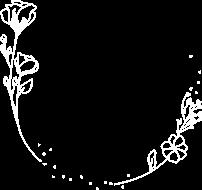


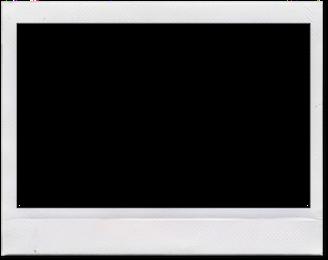

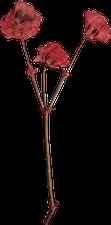













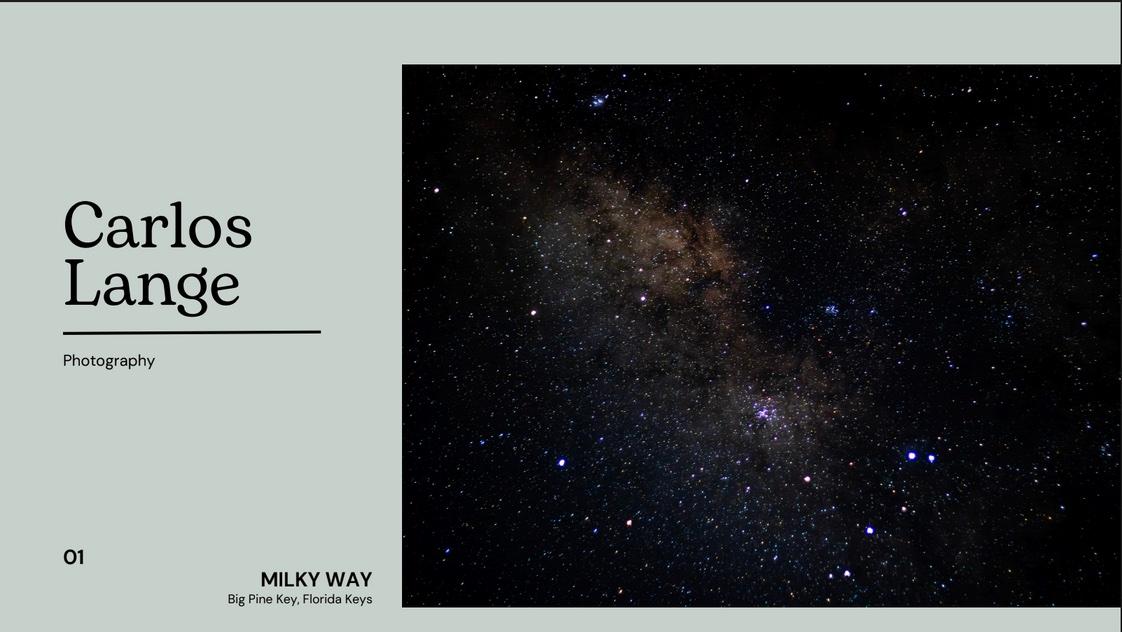


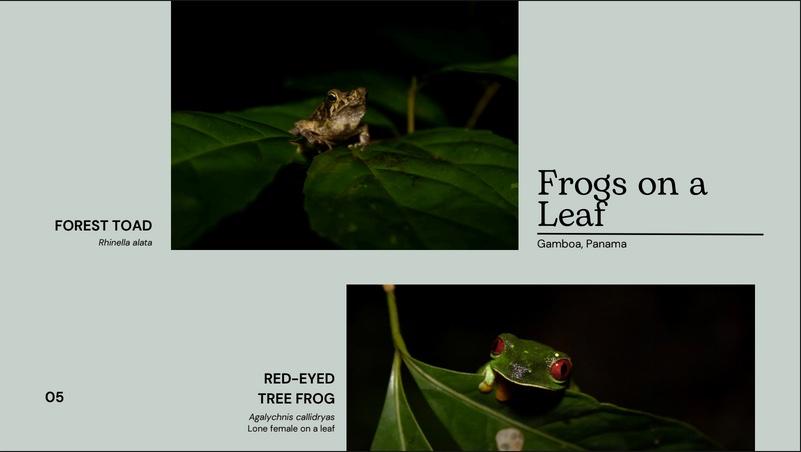
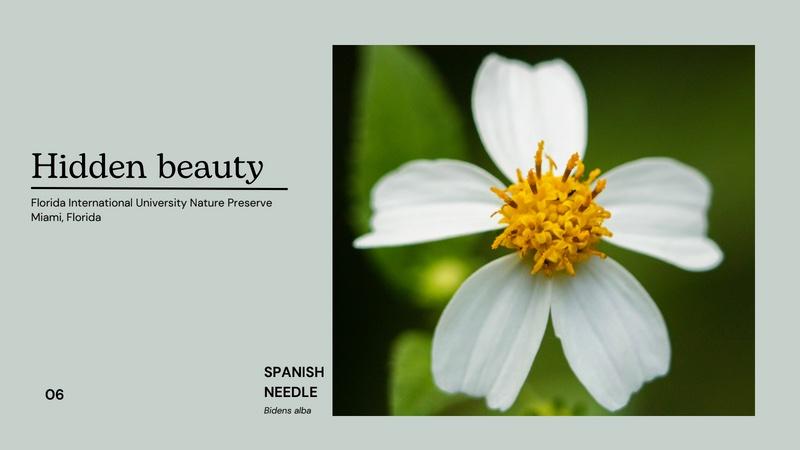
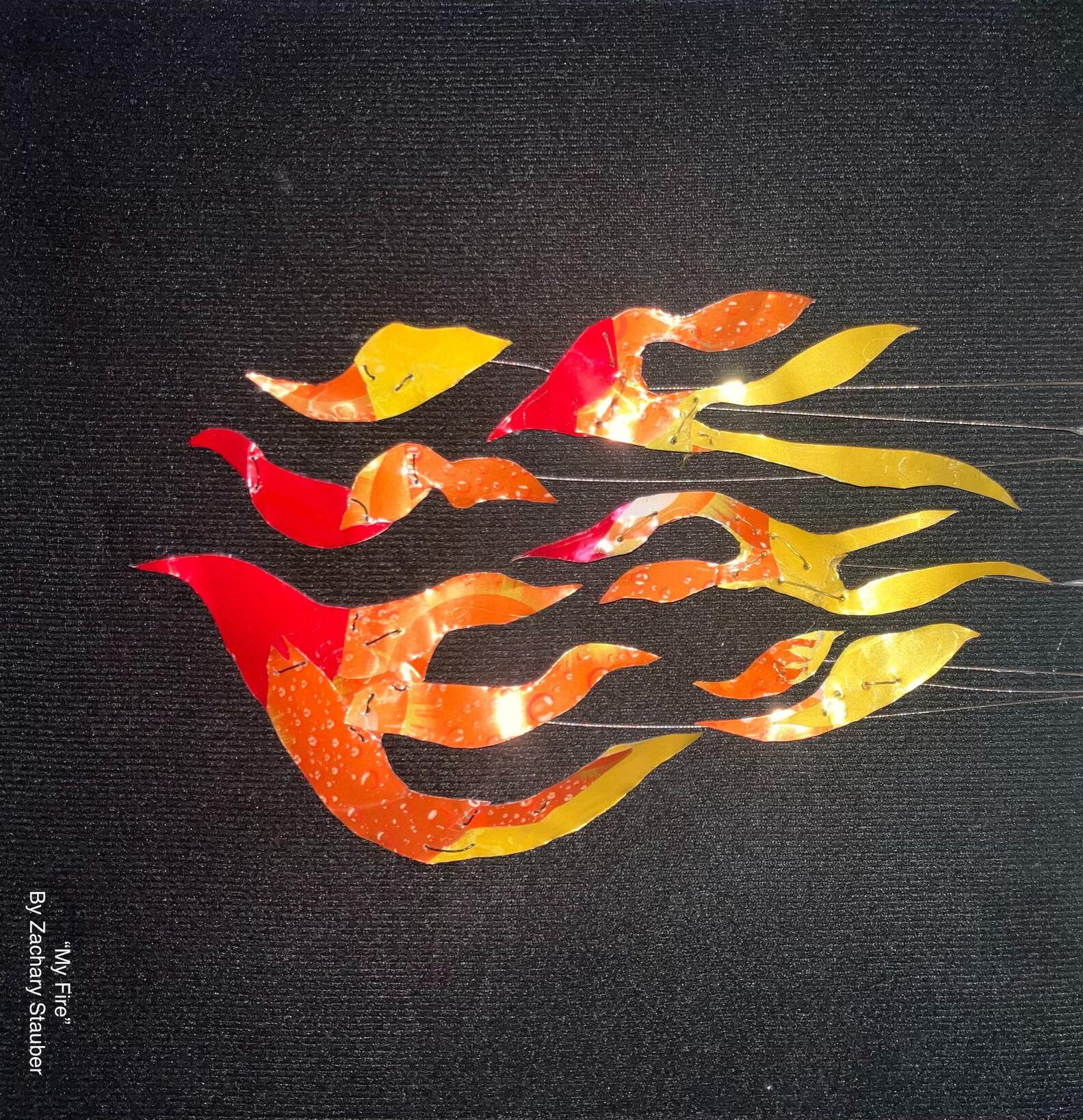
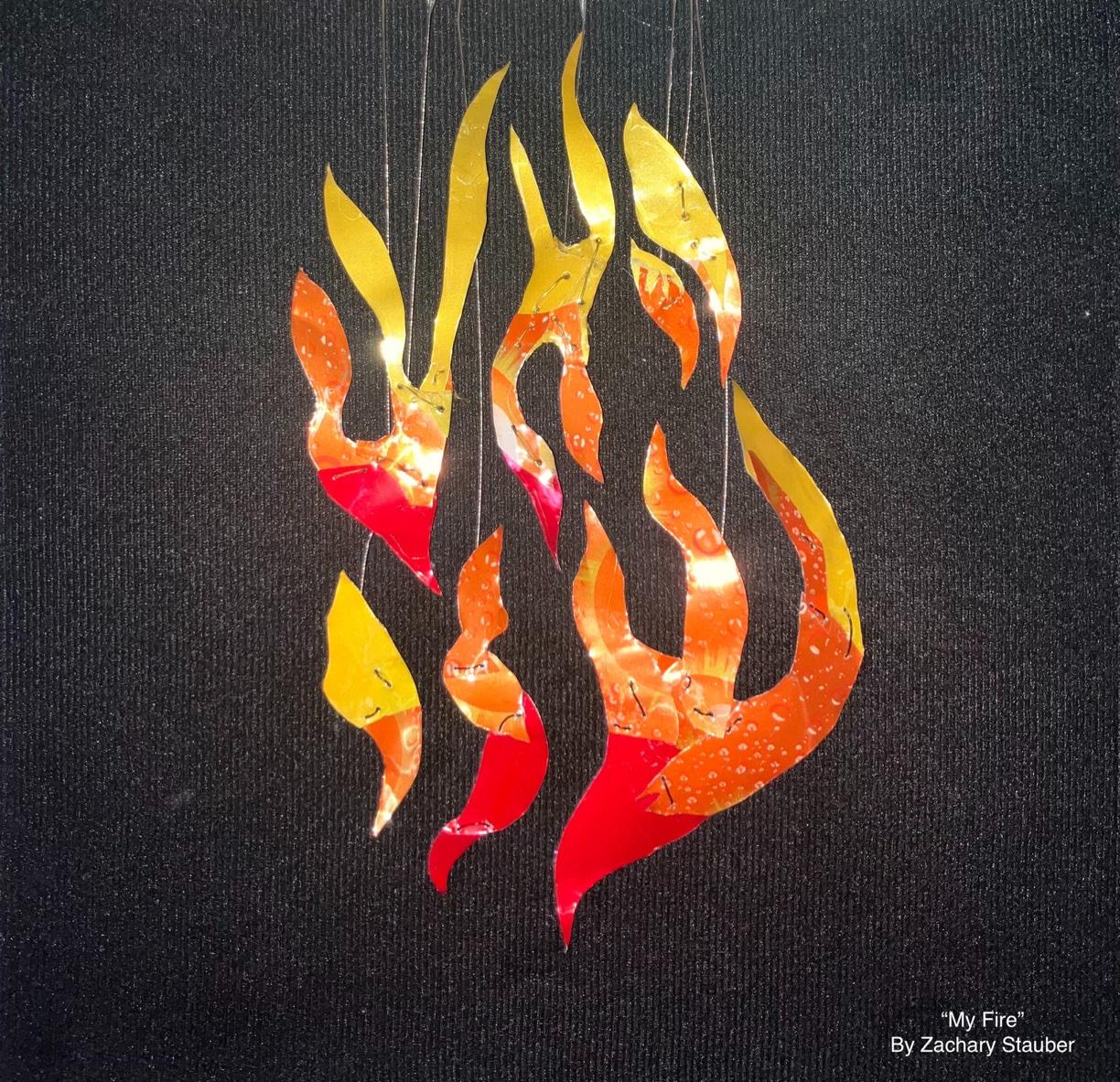
Thick air like syrup envelops me as I step out of the Trivandrum airport. The smell is home- vegetal rainwater, spice, woodfire smoke and gasoline- a blend I’m reminded of on certain nights in Miami and in my dreams. We drive for three hours through pitch darkness broken by streetlights and neon signs. We drive on pockmarked roads that weave through overgrown foliage. Pearls of monsoon ra in drum against the windshield, coalesce, and slip into mist behind us. When I was in second grade, we learned about the water cycle- I remember catching this rain and wondering if I’d ever hold the same drop of water twice in my life. I’d wonder how long I’d have to stay in one place for the cycle to bring the same drop back, or if my odds would be better if I chased the clouds.
Before dawn breaks we turn onto the little driveway that leads to the big white house where my father and grandfather were born, and I have returned every other summer for over twenty years. Beside the driveway runs a stream where my cousins and I used to hover, facing the sun so the shadows cast behind us, waiting to plunge buckets into the stream to scoop tiny fish and freshwater crabs. The head of the stream flowed into an open paddy field, feeding the thick blades of rice plants which grew partly submerged. That stream is only a muddy trickle nowadays, and none of my cousins are home. We’re too old now for buckets and tiny fish anyways.

Water Cycle Aidan T Kunju

the image finally comes into view better than that! into focus sand, after flighty, skittish, desperate attempts to grasp ‘why?’ ‘for what?’ finally settles into a mold blazing with indignance, yet finding a place from fickle to firm the jubilance, relief, of an intensified reaction, redoubled reason provides a hot, fervent, smiling, gritting glow from within the lower ribs ((there is a revolution to be had inside us all))
The Crown & her tics & her tics & her tics
I am the benevolent ruler of my mind, of course. I should tell you, I am not failing in the rule of my subjects. As to those uncontrollable ones [who defy me] I, the king, am simply looking the other way. As they are most likely unyielding, most likely deaf, and with a mind of their own, I make my regal decision to ignore them And save the burden of addressing the coup for another day… For now, the root of this rebellion May stay quiet and hidden. The burgeoning freak only sees glimpses of the light I am sure that still My command will not be tested. [revision, a few years down the line: it was.]

Annika Dhawan
Mesmerized

A heave, a push, out comes a head full of black hair.
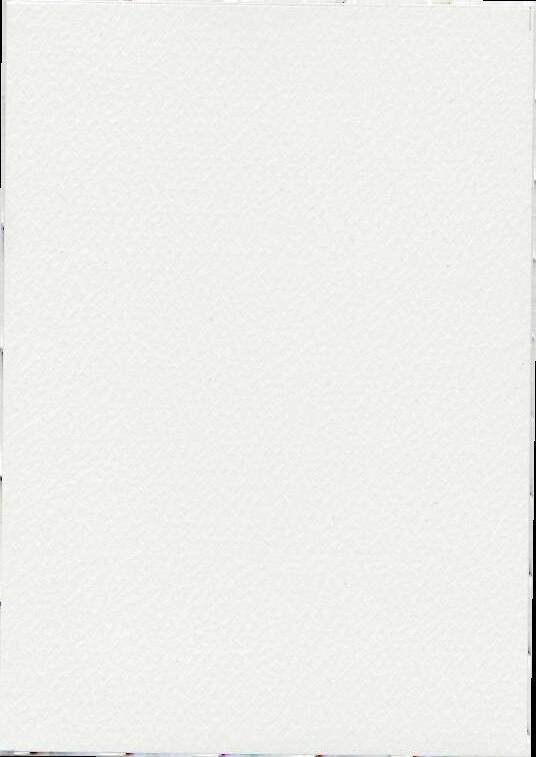
Bare hands barely catch “Baby in Bed!”
Then comes the cry she waited 9 months to hear.

Scrunched eyebrows relax.
Pursed lips erupt into “Felicidades!” all around.
A well-oiled machine whirs around Me –the loose cog.
Gloved hands lift the baby, pull the placenta, as bloody cloths pile the bins. .

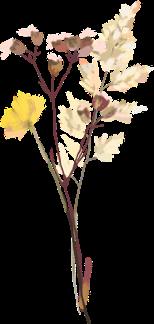

Fairy godmothers hover over baby, stretching her, sizing her, weighing her.
There I stand in the center
Mesmerized by her head full of black hair, as if I was staring at my reflection 21 years ago.
I was her once, a head full of black hair
Mesmerizing everyone in the room.
As my white hairs begin to seep in, I am transported to my own beginning.
Mesmerized by the beauty I once beheld:
A head full of black hair.


She will never remember me, But I shall never forget her
-Isha Harshe
Comfort from the river
Danielle Abdennour

In my memory, That sound will always stay. We felt death reverberate throughout our bones
That day.
I will never forget the yellow tape Nor the hysteria on her face.
The shiver in my spine
As the sirens arrived.
How we sat together in silence
To draw comfort from the river And from each other.
I wish that this life could have treated you better.
Alone,
You left the world behind. Somewhere far from here
I hope that you are at peace And that your soul is alive.
i was 13 and i didn’t get to say goodbye they said she was better but instead i stood in the rain behind the ambulance which didn’t even make it out of the parking lot i was 18 and i didn’t get to say goodbye because they told her that her pain was nothing and that she should just sleep on her other side but her congested heart still failed and the cancer would argue that her pain was not nothing the ghosts of my grandmothers persist in my DNA i carry them with me every day so that others might have the chance that they didn’t quite get
I f rst real zed that not everyone was cut out to be a phys c an when I f rst asked my dad, a renowned psycholog st, how he would recommend for someone to process the death of a pat ent. He sa d to push t out of m nd and gnore t.
I real zed then that not everyone has what t takes to be a phys c an. Most certa nly not my father.
Not everyone can use the r palms to fervently pound on the chest of a dead body n desperate attempts to pump l fe back nto a vessel that asked for perm ss on to leave th s world
Not everyone, n the same moments as death, can hold the hand of a broken man two rooms down to f nd h s vessel a shelter to recover and heal from the r gors of alcohol and abuse.
Not everyone can use those same palms to press nto the chest of the person they love at n ght and not see them covered n red as some sa ntly Lady MacBeth.
Not everyone can pray and s ng gospel hymns w th a gr mac ng woman as a glor f ed ndustr al vacuum saves her l fe by pull ng out the decay ng t ssue ns de of her
Not everyone can do so wh le pray ng to God that the State has not yet changed the law th s hour to make sav ng her l fe a cr me.
Not everyone, n the very same week, can breathe a s gh of rel ef at the cr ppl ng pa n n your own uterus and thank your own bloody cycle that the g ft of l fe has not yet cursed you wh le crack ng n gr ef for a mother who lost a ch ld never to breathe.
Not everyone can s t n Sunday pews and hear the calls of s n for the sk lls you possess to save a l fe.
It takes a certa n person to hold such souls n your hands and to take n the r pa n and draw t out l ke pull ng nfect on from a wound.
Isn’t that the reason we became doctors n the f rst place? To learn to pull out pa n from others and take t nto ourselves so that no one else has to feel th s way?
So, no, not everyone can be a Doctor.

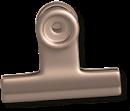

Corn salsa



Directions
Ingredients
16 oz canned shoepeg corn
3 avocados
1 red onion
1 red pepper
1/3 cup extra-virgin olive oil
1/4 cup red wine vinegar
1 tablespoon minced garlic
4-8 drops tobasco
1/2 tablespoon cumin
1 teaspoon chili power
1/4 cup chopped cilantro
1/2 cup lime juice
salt to taste

Recipe by HOLLY LOTURCO makes a great study snack!

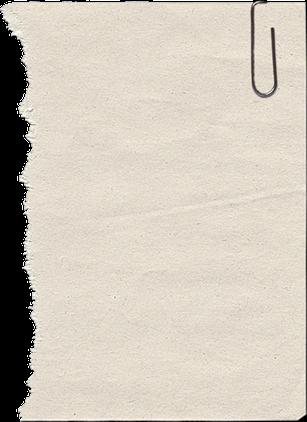

Dice avocados, red onion, and red pepper 1. Drain canned corn 2.
Combine all ingredients in a large bowl 3. It’s that simple! Enjoy with tortilla chips or sliced cucumbers for a healthier option 4.
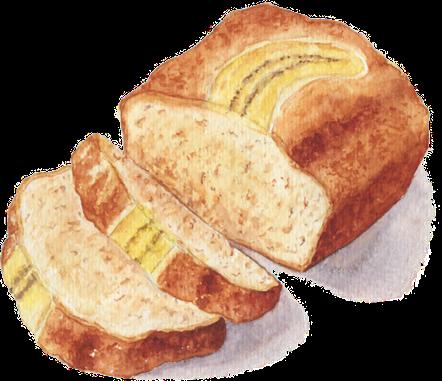
CREAM CHEESE STUFFED BANANA BREAD
This cream cheese-stuffed banana bread is a decadent twist on a classic favorite. Bursting with the natural sweetness of ripe bananas, the crunch of toasted nuts, and a rich, creamy center, it’s a moist and indulgent treat that’s perfect for breakfast, dessert, or a satisfying snack.
YASMINE MOHSENI
UNIVERSITY OF MIAMI MILLER SCHOOL OF MEDICINE CLASS OF 2028
Ingredients
Banana Bread Batter
⅓ cup oil
½ cup granulated sugar
2 eggs
1 ¾ cup flour
1 tsp baking powder
½ tsp baking soda
½ tsp salt
1 ½ cup mashed ripe banana (the more the better)
½ cup chopped walnuts
½ cup chopped chocolate
1 whole banana (optional)
Cream Cheese Layer
4 oz full or low fat cream cheese, softened to room temperature
1 egg
3 tbsp flour
3 tbsp granulated sugar
Notes:
Storage: Store the banana bread in an airtight container in the fridge for up to a week
Instructions
4
Preheat the oven to 350°F (175°C) and grease a 9x5-inch loaf pan.
1. Prepare banana bread batter. 2. Cream together oil & sugar. 3. Once combined, add in eggs and beat well.
Sift dry ingredients and add to wet ingredients. 5. Add in mashed bananas. 6. Stir in nuts & chocolate 7 Prepare cream cheese layer. 8. Combine all ingredients in a mixing bowl using a whisk or hand mixer 9. Assemble. 10. Pour ⅔ of the banana bread batter into the pan. 11
Add the cream cheese layer and the remaining portion of batter on top 12. Sprinkle more chopped walnuts and chocolate chips. 13. Slice a banana vertically in half and place on top with the seeds facing out (optional) 14. Bake for 45-50 minutes, until a toothpick inserted in the center comes out clean. 15 Cool in the pan for 10 minutes, then transfer to a wire rack to cool completely 16.

o Mori o Mori


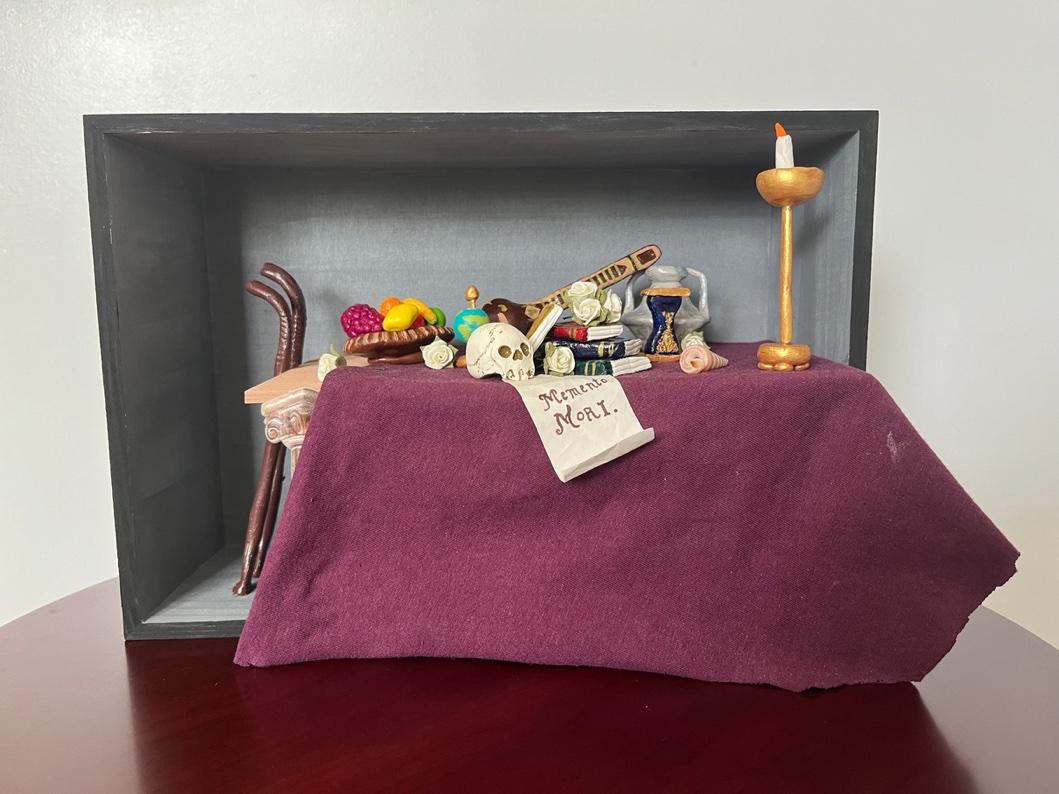
By Emily Parra

etet
In 2014, 29-year-old Brittany Maynard received a terminal diagnosis of brain cancer only one year after getting married. When a new chapter of her life was just beginning to be written, the book abruptly snapped closed, and this young woman was forced to come to terms with and make arrangements for her own death. Living in California at the time, Maynard lacked the resources and legal permission to have an assisted death, as the state did not yet have a law enacted permitting medically-assisted dying. She had to uproot her life in California to move to Portland, Oregon in order to have a medically-assisted death protected under the state’s Death with Dignity Act. Ten years later, this option is only available in ten states in the U S , barring many individuals in similar situations from access to more end-of-life choices.
“Remember your death.” This macabre message is the rough translation of memento mori, a Latin phrase serving as a reminder of the inevitability of one’s mortality. For those who are lucky, the thought of one’s own mortality is a distant idea on the

on i i m
on i i m
horizon, not to be revisited until old age. For many, however, this thought is at the forefront of their minds, impossible to escape. Animals suffering from fatal injuries or incurable diseases are often euthanized without hesitation. This begs the question - should humans also be granted this mercy? When confronted with one’s own end, should one have the right to plan accordingly, going so far as to decide the manner of their death?



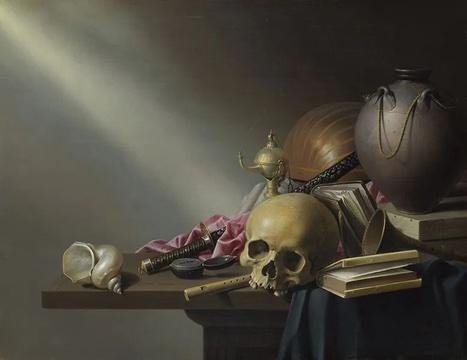
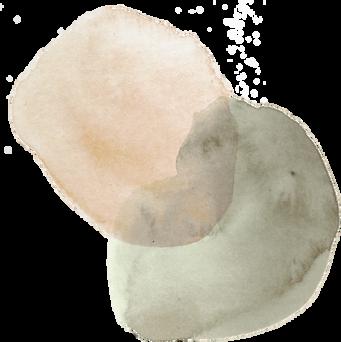
extinguished. The empty seashell is a nod to the life that once inhabited it. The flowers and fruit will eventually wither and rot, and the bubbles will burst. The viewer is left to form their own interpretation of the piece, from feeling gratitude for the time they are given to live to being inspired to conduct themselves in a certain way to ensure an afterlife in heaven.
The shadow box was chosen as the medium for this piece instead of the traditional painting in order to make the lives represented more tangible to the viewer. Incorporating objects into the piece which represent defining aspects of individuals’ lives who had a medically-assisted death encourages viewers to ponder the unique sets of circumstances and life experiences that may lead someone to consider this method for the end of their life. Brittany Maynard, who loved to travel with her family and explore the outdoors and nature, is represented in the piece by a pair of hiking sticks and a globe. The second instance of medically-assisted suicide represented in the piece is the case of husband Charlie Emerick, 87 years old, and wife Francie Emerick, 88 years old After meeting in college, the couple was married for 66 years and had three daughters Charlie Emerick was an ENT physician, and the pair served as medical missionaries in Miraj, India for several years in the 1960s. The town of Miraj is known for its production of musical instruments, the most notable being a sitar. The couple’s missionary work is symbolized in the piece by the string instrument. Francie Emerick had a passion
for reading and was a proud book club member, represented by a stack of books in the piece. The Emericks each developed health conditions deeming them terminally ill later in life. Charlie Emerick suffered from Parkinson’s disease, prostate cancer, and heart issues. Francie Emerick also suffered from cancer and had multiple heart attacks Living in Portland, Oregon at this time, the couple made the decision to have an assisted death Unlike Brittany Maynard, the state in which they lived already protected their choice under the Death with Dignity Act, which permits medically-assisted suicide for mentally competent, terminally ill patients who have six months or less to live. The couple was able to receive lethal doses of medication and pass away peacefully in their sleep.


The Emericks donated their bodies for research. The white roses in the piece are typically used to honor individuals who donate their body to scientific discovery and learning.
Ten U.S. states and Washington, D.C. currently have laws enacted to permit medically-assisted death, including Oregon with its Death with Dignity Act enacted in 1994 and California with its End of Life Option Act more recently implemented in 2016. In almost 20 other states, it is a matter of legislative discussion. Other countries around the world have similar legislation, such as Spain, the Netherlands, and Switzerland. Due to limited resources and legislation authorizing the practice, “suicide tourism” is on the rise Those seeking help with medically-assisted suicide travel to places where it is allowed for nonresidents to receive such assistance, including Vermont and Oregon in the U.S. and Switzerland internationally. This clear demand for medical assistance in dying raises the question of whether the practice should be implemented in more states in the U.S. as well as worldwide in order to allow people to die on their own terms. The title of this piece is Memento Mori et Consilium, Latin for “remember your death and plan.” Only time will tell how much of a say one has in these preparations in the future.
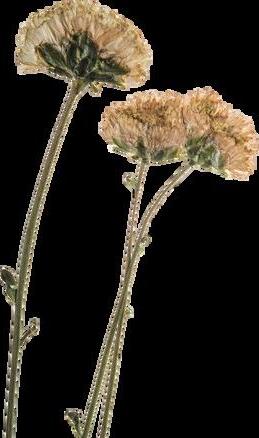

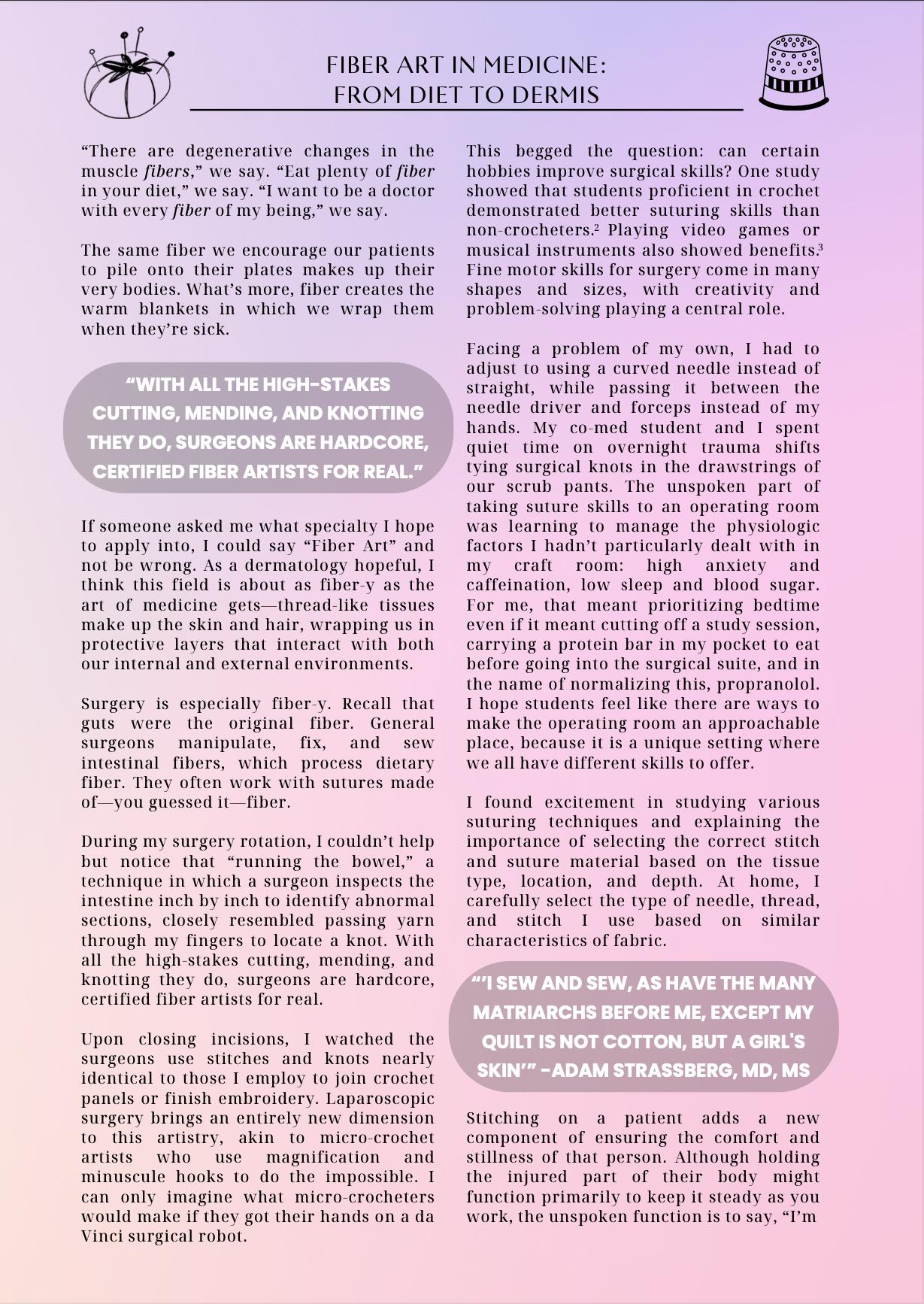

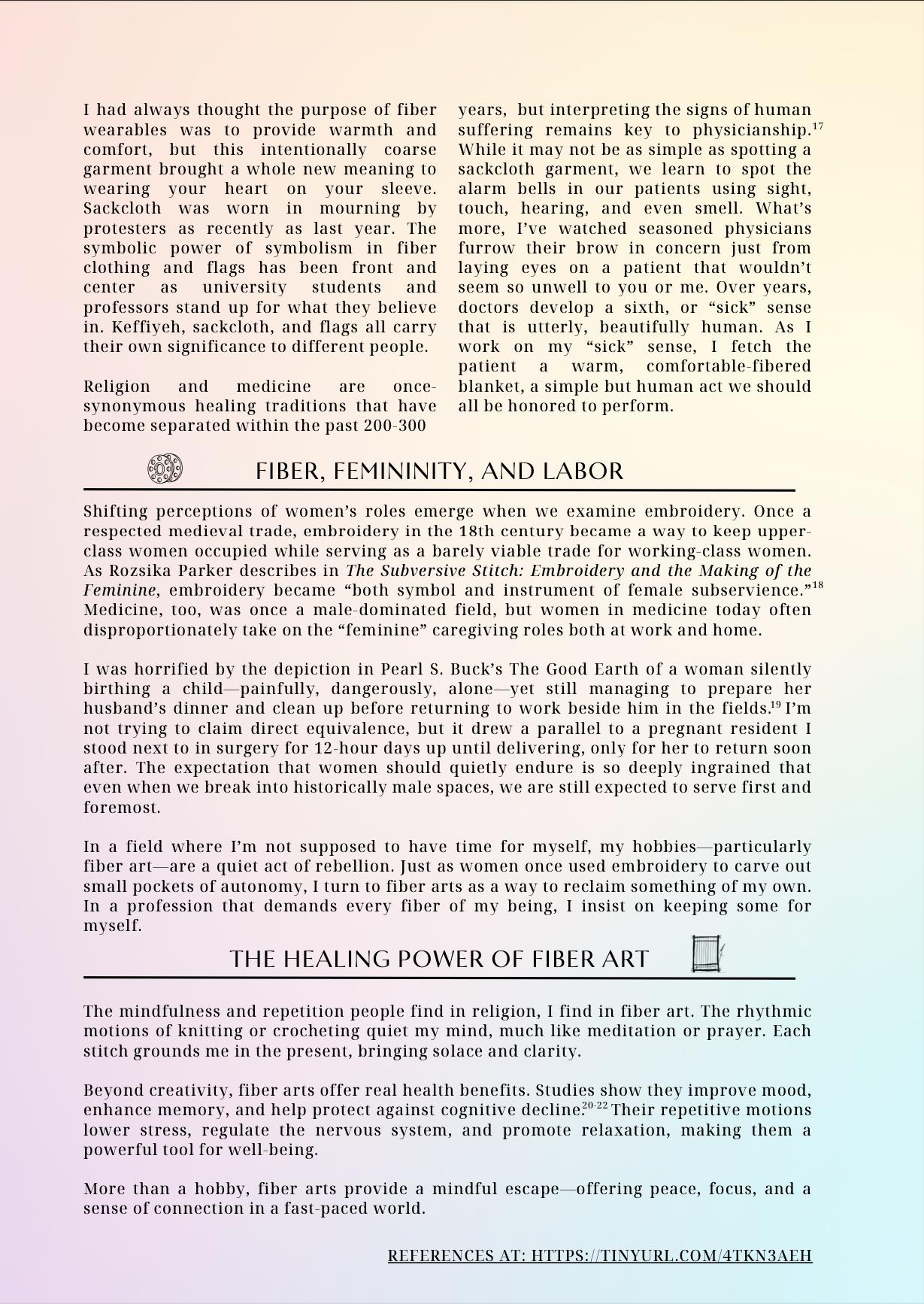
a light in the dark: portrayal of mental illness in next to normal
by rebecca soistmann
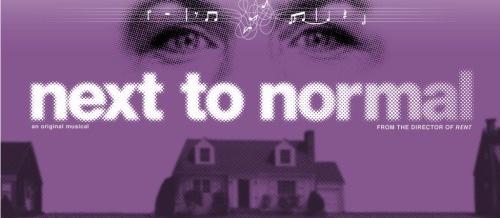
Next to Normal, with book and lyrics by Brian Yorkey and music by Tom Kitt, rocked Broadway stages beginning in the spring of 2009, bringing light to an intensely stigmatized topic: mental illness. The musical tells the story of one family’s struggle with mental illness, as Diana, a wife and mother, battles bipolar disorder and depression. Next to Normal attempts to destigmatize mental illness and provide an illustration of how it can affect anyone through the story of Diana Goodman. Through the use of parallel story arcs, critiques on psychiatry, and metaphors using light and dance, Next to Normal partially accomplishes this task, as it does paint a clearer image of how mental illness can affect someone and their family very deeply, but the psychiatry throughout the musical focuses solely on the biological basis of Diana’s illness, and not so much on ecological factors, leading to a lessthan-accurate portrayal of bipolar disorder and depression
To briefly summarize the plot, Diana’s mental state spirals out of control following the death of her eight-month-old son, Gabe She continues to have delusions of Gabe growing up over the next eighteen years Her psychiatrists land on a formal diagnosis of bipolar depression and spend many years attempting to treat her in several ways none of which work for very long Dan and Diana have a daughter, Natalie, two years after Gabe dies But Diana’s needs take precedent in the family and Natalie is left to essentially raise herself After deciding that she prefers the highs and lows of bipolar disorder to the muted, dull life she leads while taking antidepressants, Diana flushes her antidepressants down the toilet and eventually attempts suicide Diana’s doctor decides that ECT, or electroconvulsive therapy, may be the only option to “heal” Diana. This provides problems of its own that Diana and her family must face. Natalie, a 16-year-old straight A student who plans to graduate early
and head to Yale to escape her family’s problems, begins to unravel throughout her mother’s struggles. The story concludes with Diana leaving Dan, insisting that the only way she can begin to heal is to do so alone, and Natalie forgiving her mother for not being able to provide a “normal” life.
Parallel storylines: the role of both nature and nurture in mental illness
Natalie’s character arc very much mirrors her mother’s These parallels between both women’s stories portray mental illness as having both genetic and environmental components One of the most significant times the two arcs overlay occurs when Diana undergoes ECT To cope with her mother’s situation and long-term neglect, Natalie turns to drugs and takes her mother’s prescription antidepressants in excess Natalie’s altered perception coincides with Diana’s ECT during the song “Wish I Were Here ” Together they sing, “Have I blown my mind forever? Is cloudy my new clear? Wish I were here” 1 Both women’s treatments cause them to question their mental state, and the ability to come back from the extreme lows they have experienced This moment is mirrored later in “Maybe (Next to Normal)” when both begin to heal and recognize each other in their own struggles Diana recognizes her neglect of Natalie when she admits, “We tried to give you a normal life, but I realize I have no clue what that is” 1 Natalie accepts her mother’s apology and assures her, “I don’t need a life that’s normal that’s way too far away But something next to normal would be okay”.1 This moment allows both women to propel themselves further into their healing process, as they’ve forgiven one another for the harm they have unintentionally inflicted. By using parallel story arcs, the concept of Diana’s illness as having a genetic predisposition is exposed. Natalie shows signs and symptoms of

possible bipolar disorder akin to her mother’s illness. However, these story arcs also demonstrate how deeply Diana’s illness has affected Natalie’s psyche, even without the genetic predisposition. Natalie grew up with her mother experiencing manic episodes quite frequently, which extremely emotionally and socially burdened Natalie, further leading to her own personal struggles with mental illness
The power of art to mold people’s perception of medicine for good and bad
Throughout the play, several characters allude to the “inexact science” of psychiatry The portrayal of the doctors illustrates their capability and optimism about healing Diana, even though several attempts to do so have failed thus far Both Dr Fine and Dr Madden (Diana’s two different psychiatrists) make comments that expose the obscurity of their field, such as when Dr Madden reports to Dan and Natalie that “a minority of patients report some memory loss, but it’s usually not much memory” 1 In this statement, Dr Madden reveals that the science behind ECT is murky and attempts to quantify memory What exactly is “not much memory,” and how does this statement influence Dan and Natalie’s feelings about ECT? Dan and Diana must choose between proceeding with ECT and the possibility of Diana losing memory, the content of which they have no idea, or staying away from ECT and the possibility of Diana regressing even further and potentially attempting suicide again
Because the depiction of the doctors shows their depth of care for Diana, and competence at doing their job (even when they do not have all the answers), the audience may view the field of psychiatry in a positive light. This view may be productive in encouraging audience members to seek clinical support, should they be experiencing similar mental struggles. However,
the depiction of ECT may lead audience members to view ECT in a negative light and not trust the possibility of ECT as a therapeutic process In a segment of Science Friday on NPR titled “Singing About Mental Illness in Next to Normal,” Ira Flatow interviews composer Tom Kitt, and writer/librettist Brian Yorkey about their process in creating the show and impacts this show could have on mental illness A psychiatrist calls in to the show, and comments that ECT as portrayed in Michael Douglas and Saul Zaentz’s One Flew Over the Cuckoo’s Nest “set back ECT about a generation in terms of people being afraid of it” 2 With the depiction of Diana’s state as significantly impaired after the application of ECT, the possibility of “[setting] ECT back” increases too
The necessity of finding a doctor that suits one’s individual needs is displayed in Next to Normal as well. As Dan notes after Diana stops taking her medication and does not respond well to Dr. Fine’s guidance, “they say it’s like dating, you have to keep going until you find the right match”.1 Several mental health institutions and agencies, such as the National Alliance on Mental Illness (NAMI), back up this claim in a guide prepared on NAMI’s website titled “Choosing the Right Mental Health Professional,” NAMI argues that “finding the right match is crucial to establishing a good relationship and making sure you’re getting the best treatment” 3 Diana’s relationships to both Dr Fine and Dr Madden illustrate this concept Diana seems to lack trust in Dr Fine and ultimately diverges from his plan of medication Upon meeting Dr Madden, Diana visualizes him as a rock star and expresses greater trust in him and their relationship His treatment plan initially seems a bit far-fetched, but she trusts him enough to go through with it, and this demonstrates positive results
Several of Diana’s lines paint the inability of medicine to fully treat her condition In “The Break,” she sings “What happens if the medicine wasn't really in control? What happens if the cut, the burn, the break, was never in my brain, or in my blood, but in my soul?” 1 She alludes to the fact that while her illness has been studied and managed from strictly a biological basis, she believes that her real “problem” lies in her soul, instead of her brain chemistry She loses trust in the medical model as being able to heal her, as medicine simply treats the physical aspect of her personhood.
In a paper published by the Disability Studies Quarterly journal, PhD candidate Scott Wallin argues, “the musical fails to remove stigma associated with people with psychosocial disabilities and overlooks an ecological perspective that would better honor their experiences” 4 His argument is well founded, as the audience receives an extremely narrow look into Diana’s life and ignores outside forces that may stigmatize individuals with psychosocial disabilities. Diana’s life seems to be restricted to her relationships with her family. She does not appear to have friends, any other family members, any spiritual beliefs, or any other activity or hobby that add value to her life. Someone experiencing mental illness outside the confines of this musical may rely on other aspects of their lives to heal and simply to feel better Without these aspects, Next to Normal does not adequately display the life of someone with a psychosocial disability
Additionally, other than her mental illness, Diana is portrayed as relatively “normal ” Yorkey and Kitt paint her as the typical suburban wife, and in the character description, Yorkey describes her as “Sexy Sharp” 1 There is no mention of any financial burdens that the Goodman family faces because of Diana’s mental illness throughout the play, implying that the Goodman family is very well-off This image may not be entirely accurate in portraying those that live with similar mental illnesses As Yorkey comments in his interview on NPR, “this is a story about something that happens to many, many people, including many suburban mothers And we wanted to make her a person from our lives and not in some way sort of make the character, and therefore her illness, exotic and different and other” 2 Kitt and Yorkey did not bestow any special artistic or literary talents on Diana either, as she points out when she sings “I’m no Sylvia Plath I ain’t no Frances Farmer kind of find for you ” 1 The writers illustrate that mental illness plays no favorites, but they fail to give voices to those whose illness is severely affected by socioeconomic factors and cultural factors.
The overall effect of the interactions between patients, doctors, and caretakers in Next to Normal leaves the audience with a negative view of ECT, and a perception of psychiatry as attempting to solely treat the biological aspects of one’s mental illness, rather than recognizing mental illness as something that’s affected by sociological, cultural, and socioeconomic factors
Metaphors: rhetorical strategies in art drive understanding of mental illness
Bipolar depression is not something experienced by most of an audience at a Sunday matinee. Understanding how it impacts people personally might be hard to access as an audience member. Kitt and Yorkey use metaphors of light and dance to paint clear pictures of the highs and lows experienced by Diana and give the audience a deep understanding of how her mental illness has affected her In an excerpt from his book, Inside Next to Normal, Scott Miller notes that “light” as a metaphor symbolizes several different things, as “sometimes it means literal light, sometimes it means enlightenment or revelation, sometimes it means easy or lighthearted” 5 Diana searches for “light” as healing, but encounters “light” that hurts as well, such as light resulting from electricity in the ECT As she sings, “in an instant, lightning flashes, and the burst might leave me blind When the bolt of lightning crashes and it burns right through my mind” 1 This is the light that removes her memories of Gabe and thus takes a part of her soul with it, illustrating how much her mental illness and its treatment take from her

While persuading Diana to go through with the ECT treatment, Dan sings a song titled “A Light in the Dark ” Dan paints the ECT treatment as the single “light in the dark” that they have left to try, in terms of healing Diana This light symbolizes enlightenment and healing, and Dan desperately searches for this light But as Scott Miller points out, “Diana fears light, and [Dan] doesn’t understand that” 5 Not only does Diana “fear light,” but to truly find healing, she must find it alone, without the help of Dan
Another metaphor used throughout the musical to help the audience sympathize with Diana’s struggles is one of dance. Diana illustrates her illness as a dance: sometimes a dance with her delusions, sometimes a dance with death, and other times uses dance to depict how her illness affects others in her life The first mention of dancing comes when Diana describes her relationship with Dr Fine Their “dance” consists of Dr Fine leading Diana through rounds and rounds of pill regimens As Diana notes, majorly foreshadowing a later part of the plot, “Without a little lift, the ballerina falls,” referring to the drugs as her “lift,” and herself as the “ballerina” 1 Later in the text after Diana flushes her prescriptions down the toilet, she no longer has has that “lift ” During one of her delusions, she dances a waltz with Gabe singing “I dreamed a dance with you” and eventually “I’ll dream, my love I’ll live, my love And I’ll die to dance with-” 1 At this point, Gabe deludes Diana into attempting suicide The “ballerina” has lost the effect of her “lift,” her treatment for her mental illness and she has fallen because of that lack of treatment

Later, when Diana finally gives Natalie the attention she has always needed, she explains her condition, again using dance as a metaphor She sings, “I’m dancing with death, I suppose But really- who knows?” 1 She recognizes what her delusions of Gabe have truly done to her, and how they have affected Natalie’s life If the ECT did anything to help Diana, it helped her see how much she’s neglected Natalie During this song, she recognizes their parallel lives as well, saying “I see me in you” 1 Natalie has begun to do her own dance with an unhealthy mental state throughout the course of this play, but if Diana can finally find her own path to health, Natalie may be able to do so as well, and hopefully at a much earlier time in her life than her mother.
The final call? A valiant effort that misses the mark in just a few categories
Through expert use of parallel storytelling, critiques on psychiatry, and extended metaphors, Tom Kitt and Brian Yorkey’s Next to Normal illustrates the life of someone afflicted with mental illness, but the show fails to encompass more than biological causes and factors of mental illness and paints a limiting picture of the circumstances surrounding someone who may become diagnosed with a mental disorder Should Diana’s character instead be a young man of a minority race without significant economic support, his story may vary greatly from the one told in Next to Normal Only with a certain set of circumstances can someone with this disorder access adequate treatment and support However, Next to Normal provides solace to those affected with these disorders, as the experiences portrayed in the show may resemble their own Even with the limited view of factors that affect one’s experience with bipolar disorder and depression, this intensely provocative and visceral musical opens the door for discussion about mental illness
Sources 1 Yorkey, Brian Next to Normal, Theatre Communications Group, 2010
2 Singing About Mental Illness in Next to Normal Science Friday National Public Radio 14 August Web 18 November 2017 Transcript
3 “Tips for Choosing Mental Health Professionals ” NAMI PA, MAIN LINE, National Alliance on Mental Illness, 2017, namipamainline org/choosing-the-right-mental-health-professional/ 4 Wallin Scott “Next to Normal and the Persistence of Pathology in Performances of Psychosocial Disability ” Disability Studies Quarterly Ohio State University Libraries 2013 dsqsds org/article/view/3428/3202#top
5 Miller Scott “Inside Next to Normal ” New Line Theatre New Line Theatre Company 2012 www newlinetheatre com/n2nchapter html
Aidan Theepura Kunju is a 2nd year medical student with a strong interest in neurology, whose professional interests focus on re-centering disciplines often overlooked in medicine: ethics, art , and the humanities. Featured on page 23.
Annika Dhawan, a third year medical student , graduated from the University of Michigan with a major in Global Health before moving to Miami. As a kid, she frequently wrote poems in a leather journal her dad gave to her. In recent years, she has picked writing back up as a tool to put her swirling internal thoughts onto pages and try to make sense of them. Featured on pages 24 and 25.
Allan George is a medical student by day, photographer by night . He started photography 4 years ago and continues it to the present day. He conducts both digital and film photography to document the ordinary in an extraordinary manner. He is particularly interested with portrait photography, landscape photography, and black and white film photography. Featured on pages 1 (cover), 6 and 15.
Carlos Lange is a first-year medical student with a passion for both science and the arts. Originally from Venezuela , he has a deep appreciation for the natural world, which is reflected in his love for photography. With a particular interest in wildlife and macro photography, Carlos enjoys capturing the intricate beauty of nature, revealing unseen details through his lens. Featured on pages 20 and 21 .
Danielle Abdennour, a first-year medical student , graduated with a double major in biochemistry and French from Saint Anselm College and went on to earn her Master of Science in Biomedical Sciences degree from UM. Beyond her passion for science and medicine, she also enjoys the art of language and poetry, both of which can be valuable in navigating healthcare and treating future patients. Featured on pages 28 and 29.
Elise Edwards, a fiber artist from Wisconsin, is currently conducting research between her third and fourth year of medical school . After a day in the clinic or lab, Elise enjoys coming home to her small art corner, where she works in various media including crochet , knitting, embroidery, weaving, macrame, and quilting. She is particularly interested in the activist potential of fiber art and the histories of the people who pioneered it . Featured on pages 36-40.
Emily Parra, a second-year medical student , graduated from the University of Miami with a Bachelor of Science in Health Science. Ever since she was a child, she has enjoyed the arts and humanities and finding ways to express herself creatively, manifesting itself today as a passion for reading, letter writing, baking, and crafting. Featured on page 34 and 35.
Erica Lamkin, a second-year MD/PhD student , graduated from the University of Vermont with a Bachelor of Science and Master of Science in Molecular Genetics. Outside of academics, she has always picked up creative hobbies including crochet , drawing, pottery, and baking. Her art is often inspired by her journey to become a physician-scientist , often blending themes from science, medicine, and ethics Featured on page 11
Holly LoTurco, a third-year medical student , was born and raised in NY and graduated from Duke University in 2020. She has always loved the arts including dancing competitively for over 10 years. Now, she enjoys arts and crafts as a stress relief and creative outlet , including charcoal drawing, watercolor painting, photography, hand-knitting blankets, and cooking Featured on pages 7 and 32
Iris H. Kim is a Vanderbilt alumnus, Fulbright Scholar, and current second year at Miller. She enjoys writing, doodling, film, and Facetiming her dog. Find her latest projects @arcofiris. Featured on page 10.
Isha Harshe is a second-year medical student at Miller She is originally from Tampa , FL and has grown up enjoying many creative hobbies including poetry, painting, paper crafts, and reading. Featured on pages 26 and 27.
Julia See is a medical student who has had a lifelong passion for the arts. Painting has been an integral part of her life, allowing her to express her thoughts and preserve meaningful moments through her work Featured on page 14
Matt Kim, a 1st year medical student , is a graduate from the University of Florida with a major in Biochemistry. He pursues his love of Florida's natural ecosystems and historical sites through photography. His instagram is @mvttkxm. Featured on pages 5, 6, 18 and 19.
Miller Music Collective (MMC) is a student-led collaboration of Miller 's performing art talents Since it 's founding in 2023, MMC has over doubled in size and coordinated showcases like Cabaret , pop-ups at Sylvester Cancer Center, and curricular performances highlighting the importance of humanities in medicine. Their door is always open to new members, regardless of instrument , style, and level of expertise. Featured on page 31 .
Neep Patel, a first-year medical student , graduated from the University of Florida with a Bachelor of Science in Biology. Alongside his passion for medicine, Neep has a deep love for photography, using the art form to capture moments that tell stories and reflect the beauty of the world around us. With a desire to preserve and share the moments he finds most captivating, Neep hopes his work allows others to see and enjoy the world through his lens. Follow Neep’s journey and visual storytelling on Instagram @gallery pnkz Featured on pages 12 and 13
Rebecca Soistmann is a third year in the MD/MPH program. She has interests in emergency medicine, disaster planning and preparation, violence prevention, bioethics, and narrative medicine. Her Obliterants piece was born out of a narrative medicine class in college that has inspired her passion in the subject . Featured on pages 40-43.
Simran Prakash, a third-year medical student , graduated with a self-created major in Disability Representation through Media at Duke University where she studied the development of disability stereotypes through photography, film, and newspapers. She strives to use her own photography to capture different aspects of the world and create new perceptions, whether it be of nature, foods, cultures, or identities. Follow her photography on Instagram @photosbysimranp. Featured on pages 17, 60, and 71 .
Sneha Akurati is a second-year medical student at the University of Miami, where she earned a double major in Global Health Studies and Studio Art . She combines her passion for medicine and art to tell the stories of those she encounters in clinical settings, often drawing inspiration from her patients. Working across various mediums—with a special love for painting Sneha uses art as a way to capture emotion, explore identity, and reflect the human experience. Follow her creative journey on Instagram @sneha .arts Featured on pages 8 and 9
Sneha Kapil is a third year medical student and enjoys experimenting with photography in her spare time and on her travels. From urban movement , to calm landscapes, to fun portraits, she enjoys the creativity of capturing a scene! Follow along @snehakaptures. Featured on page 16.
Sunny Greene, a third year MD/PhD student (GR1), graduated from Hollins University, a small liberal arts institution in the heart of the Blue Ridge Mountains in Virginia where she learned to blend her love for medicine with her creativity. Beyond her dual degree pursuits, Sunny expresses the difficulties of medicine and science through creative writing and dabbling in painting. Featured on page 30.
Yasmine Mohseni, a first-year medical student , graduated from the University of Florida with a major in Nutritional Sciences. She combines her passion for health and creativity through her Instagram account @sweets.n.scrubs, where she shares delicious recipes and offers valuable advice for aspiring pre-medical students. Yasmine’s content reflects her dedication to wellness, academics, and inspiring future healthcare professionals. Featured on page 33.
Zachary Stauber is a Third-year medical student who, beyond his clinical interests, finds a unique outlet for creativity in unexpected places. Outside of medicine, he channels his artistic side by creating intricate three-dimensional art from repurposed materials scrap metal , empty cans, and old household items. This process of transforming discarded objects into new, meaningful creations not only fosters a sense of meditative focus, but also serves as a reminder of the value of innovation and resourcefulness. For Zach, this creative endeavor mirrors his approach to medicine — striving to find new solutions and perspectives any given situation. Whether in his art projects or the clinic, he believes in the power of transformation and the satisfaction that comes from turning challenges into opportunities for growth and healing. Featured on page 22.
2 0 2 2 - 2 0 2 3 S U B M I S S I O N S
T H E B A L C O N Y
some days I'll search for relief for grounding as I levitate on the 38th floor to see people as ants and their worries, irrelevant. hoping that I too see the irony.
-Harsh Moolani

by
SCENES
O F T H E M E D I C A L S T
Endless alarms, coffee to-go, adidas tennis shoes toe to toe.
Password guesses, ID scans, room by room -endless lands. The hustle, the hops, the presentations, the drops.
Hospital medicine a grind that never stops.
Breath by breath and tear by tearhumanity is a united sphere. We run we hide we advance we stride. For family, for science in medicine we take pride.
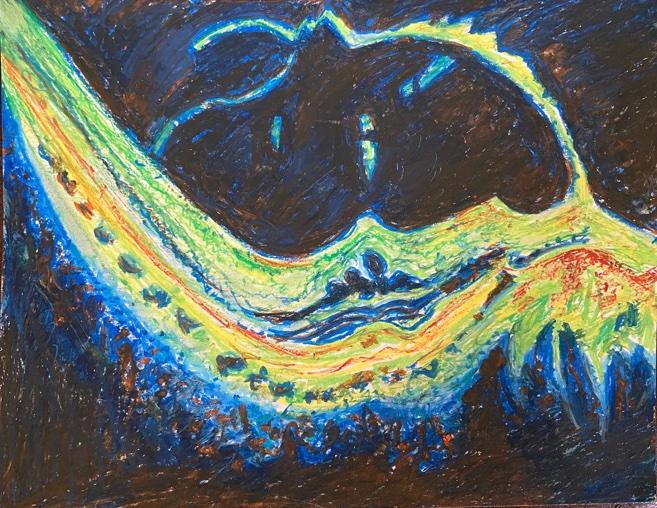
ANTERIOR CHAMBER
y C o u r t n e y G o o d m a n
y C o u r t n e y G o o d m a n
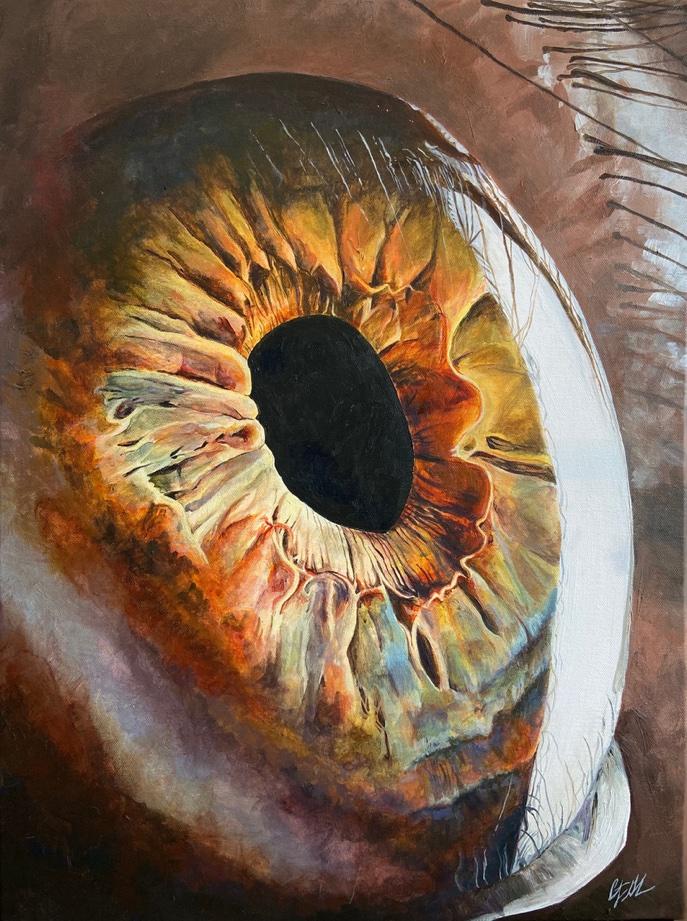
GARDEN MEMORIES
by Julia See

HOPE
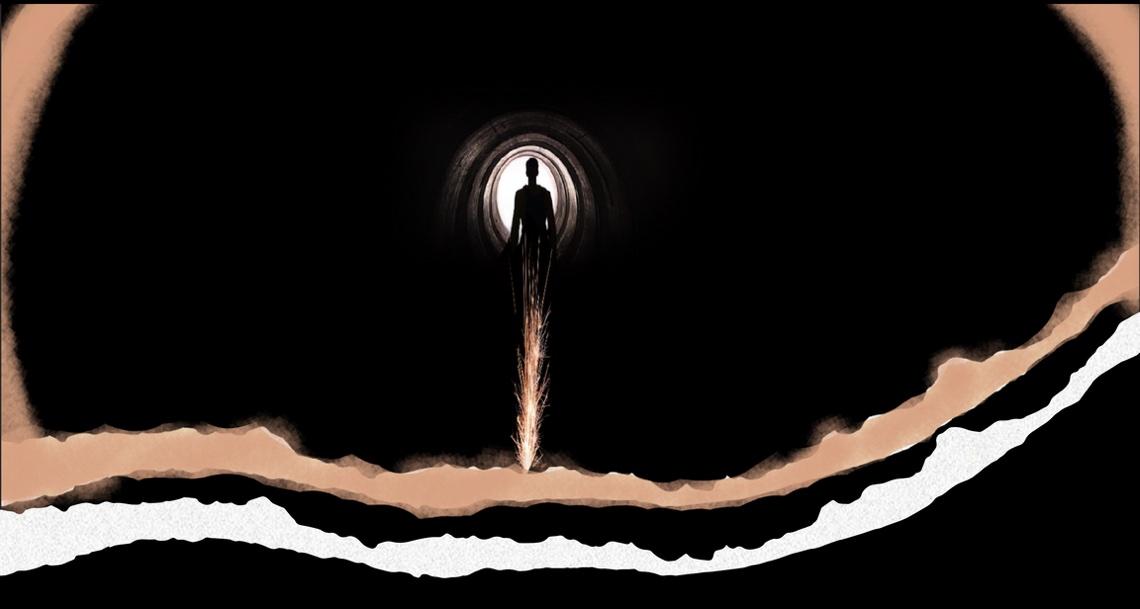


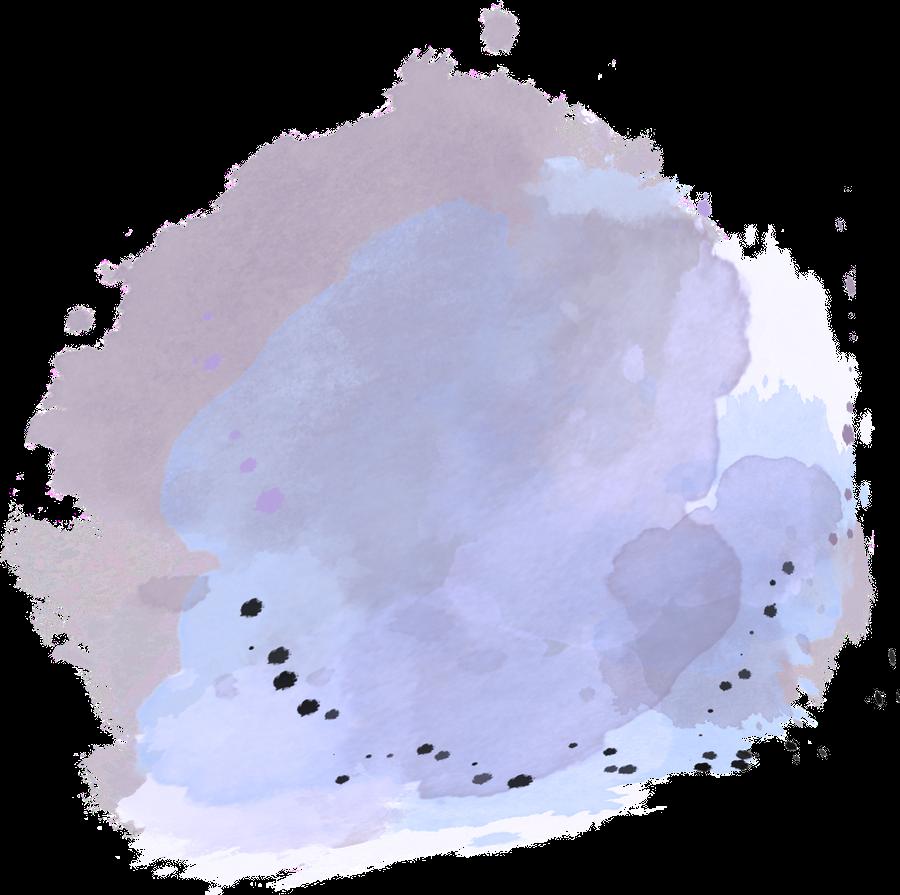




The Medium of Truth
Words but approximations
Paint but pale colors
Stone without movement
Song without permanence.
Mental anguish the direct result
Of an inability to convey The truth of what I see,
The strength of what I know
And in thatthat gap between the communicated and the understood therein lies the trouble. The frustration, the hurt.

-Neva Lundy

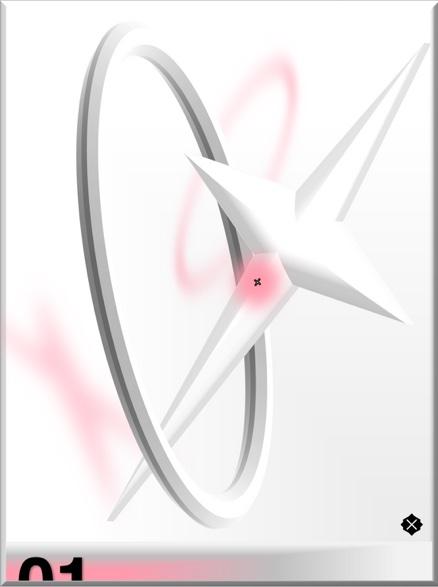

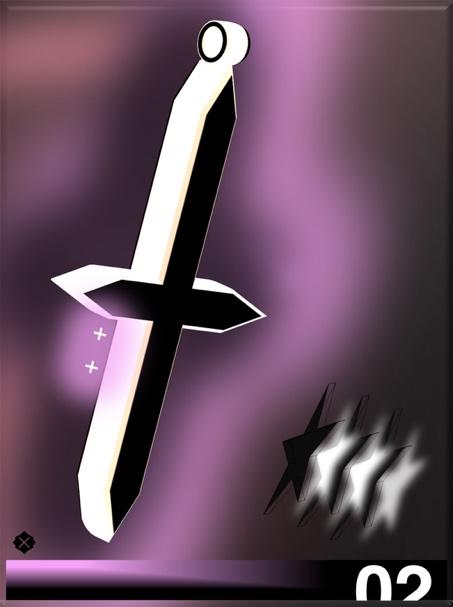
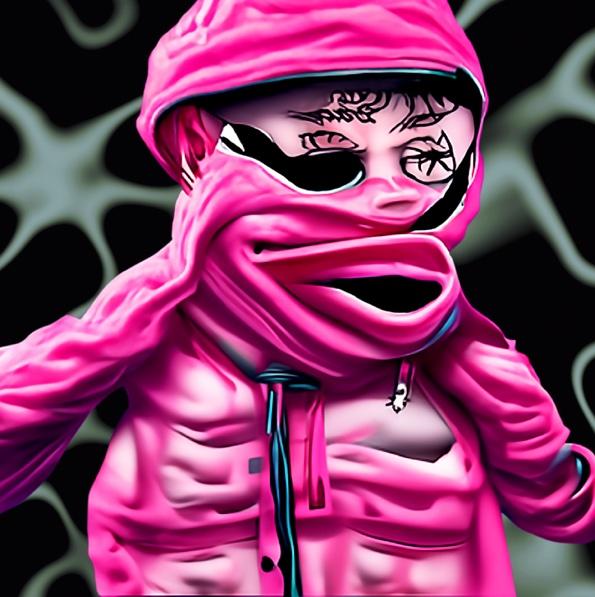
Graphics by Alex Seville

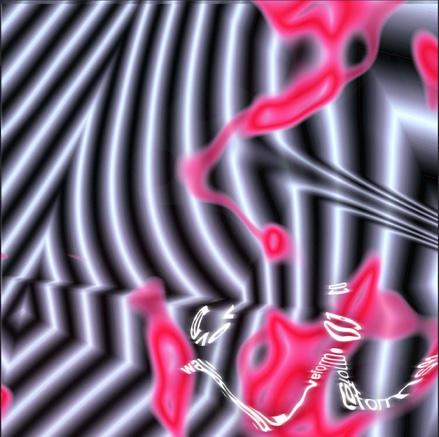
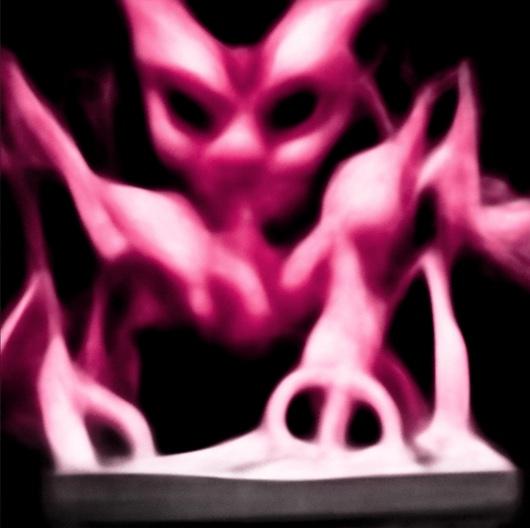
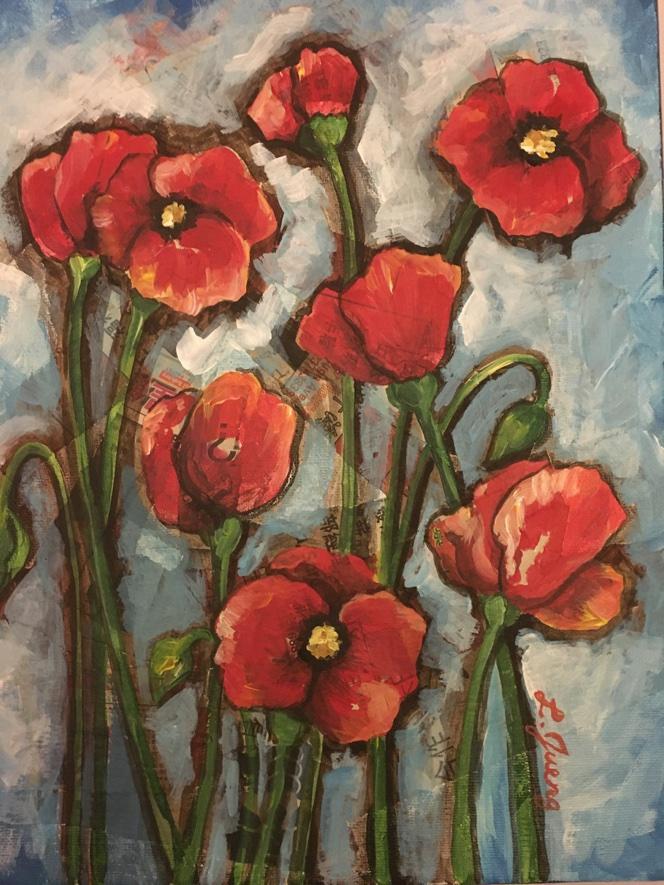
Untitled
I dreamt you in Arabic with the comfort of my mother's voice reciting prayers as I slept
I sang you in English between the verses of lullabies where my childhood was kept
I loved you in Farsi in the words of Rumi where smiles came best from those who wept
-Fatemah Akbar


Homeless
By: Ashley Vander Does

S c a r c i t y
I n t h e p u r s u i t o f m o r e ,
w h y d o w e f e e l e m p t y ?
w h y d o w e f i l l o u r s e l v e s w i t h e m p t i n e s s ?
L i k e a 3 - y e a r - o l d ,
w e t r y t o p i c k u p p l a s t i c b a l l s
a r e d o n e i n t h e l e f t
a b l u e o n e i n t h e r i g h t
b u t w h a t i f w e m a n a g e d t o p i c k u p
t h a t y e l l o w o n e t a u n t i n g u s ?
H o w c a n I b e e n o u g h w i t h o u t a l l t h r e e ?
S o w e r e a c h d o w n w i t h o u r l e f t
o u r r e d b a l l c o l l i d e s w i t h
t h e y e l l o w b a l l , p u s h i n g i t f a r t h e r a w a y
t a k i n g t h e r e d o n e w i t h i t .
- H a r s h M o o l a n i
Dangerous investments to joy she clung air to a lung in trust she fell wishes in a well on pride she grew doubts stabbing through from fear she fled heart made of lead grief down her throat feelings do not float for it’s a deadly notion to invest in emotion

- Fatemah Akbar
photo by Simran Prakash

Goddess of Destruction Shannon Wagner
Today I found myself apologizing to the spider whose web I just destroyed
An entire day’s worth of her labor erased in a sudden downward slash— three years of my loving and four years of my striving all turned to silt in my hands
I wrap my arms around myself
“You can build yourself another,” I promise You will build yourself another.


P A N D E M I C
Tiffany Eatz
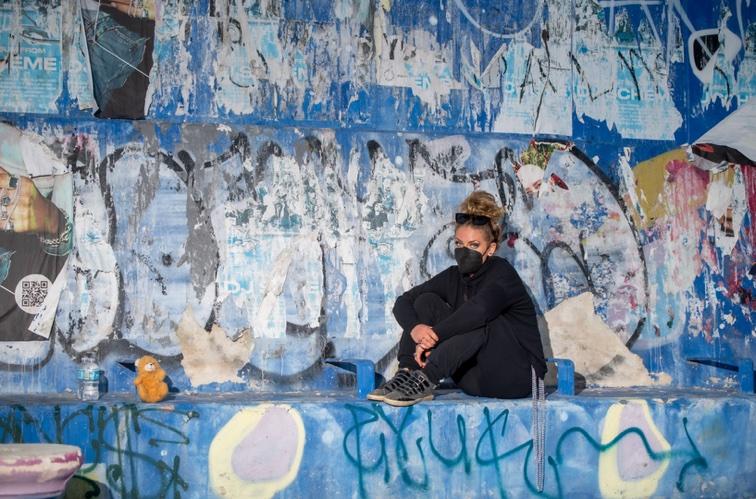
Remember the time: 2019, Without masks and death and COVID-19? Where we could amass, rejoice, and embrace-None of this seclusion we’ve all had to face.
I wonder if things will ever be the same; For now, it’s a science race and waiting game.
My heart goes out to all who lost love and life, Battling disease, social and political strife. Let’s call it transient better days ahead, Full of hugs, vivacity, and bliss instead. There’s still so much life left to not lose, So keep chugging along through these pandemic blues.
Photography: mandiworld.photos and Tiffany Eatz
Model: Tiffany Eatz

refrigerator poems
S hannon Wagner
“ W hen life throws you a bag of sorrow, hold out your hands” hold out your hands, it says well, I brought buckets red, blue, blaring yellow messy swaths of painted hues open-faced and beckoning to the Universe (or god, whomever) come on down and deliver where are you, this sorrow?
I have an empty pool out back empty as a skull lined by rustling, pale-bellied palms and lazy-draped bougainvilleas, won’t you drop down and f ill the void, sorrow?
I’ll lay out my best libations sharpened icewater down your dry, silted throat
I’ll beat music through the oppressive f lorida thick that water-dripped heat heavy, weighted, heavy it will welcome and receive you—so will I an entire universe, I have waiting just for you

oh and by the way, sorrow now that you are here sit down with me. eye-to-eye. here, yes no, I’m not angry, I — I just need to get a good, hard look at you so I can recognize your shadow in the guarded, f lickering eyes staring up from the cold-metal table sterile light blinding a body bound, exposed, waiting to be cut by our human, Hallowed hands oh frightened, fervent sorrow and teach me how I should greet your arrival in the eyes, trapped in the hospital bed, alone, lonely on the worst days of their lives, sorrow show me how to see, hold, and heal you it’s the least you can do when you come down and visit me yet again here, I hold out my hands begging beseeching imploring you think I’d resist your coming? I haven’t tired of you yet come one two three four times, more I will learn, study, keep you I will drape you in sunlight I will f ill you with song release you, lif ted, weightless I will turn your water into wine.

*P oem inspired and quoted from Kate B aer ’ s “ T hings My
G irlfriend’s Teach Me”
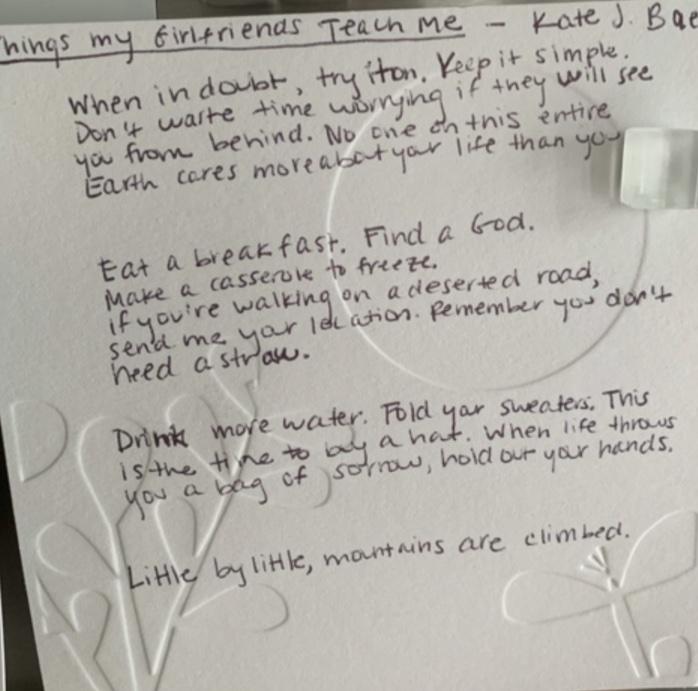
As I step onto the other side of the automatic doors I shed the skin of ordinary young adult and allow my duty as provider to permeate through my bones. Within these walls I am an integral piece of the team. I will fight for you until your last breath. I will hold your hand when those around you step down and those next-door fall .
I was given the privilege of being you r ally, and that I shall be even when you deny your need for me. We are bonded you and I, by the basic human principles of empathy and compassion. But forget not , that outside of these concrete walls in which you lay, I am human.
I too have weaknesses, I too am subject to imperfection and illness, flaws, such that make me only human just . like. you.
I too have been in your shoes, where fear permea tes throughout and clouds my choices. Sick of the same bland food, stale bed, three a .m. pricks, day af ter day while the unrest of losing hope haunts you at night .
I am no hero, but I am here. I will be here always, here to lif t your spirit when it is low and make sure that hope is never lost .
To ensure that the small victories are triumphantly celebrated.

I cannot promise you life, I cannot promi se you health, but I can promise you that I will pick you up when you can’ t get up. I promise you that I will show you kindness and make you feel heard each and every day.
T H E H U M A N T O U C H
S U S A N T A G H I O F F
Mates


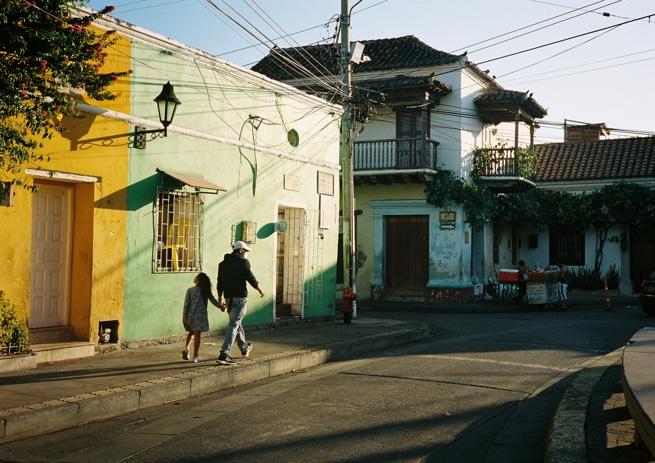

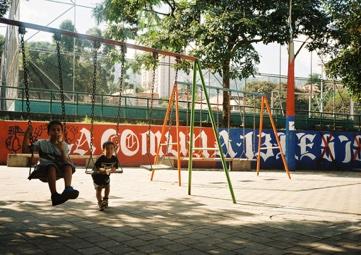

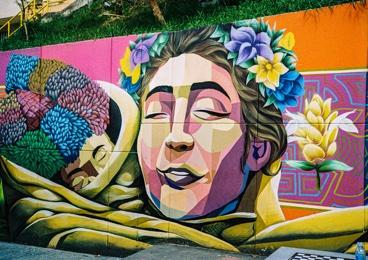


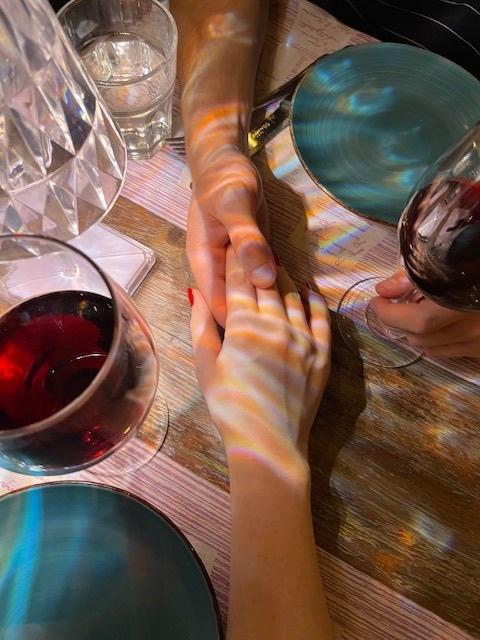
The Transformation of Medicine words to work thoughts to tasks patterns to patients characteristics to causes of death
-Harsh Moolani


Mesmerizing Mesmerizing Mesmerizing










n s es n s es n s es





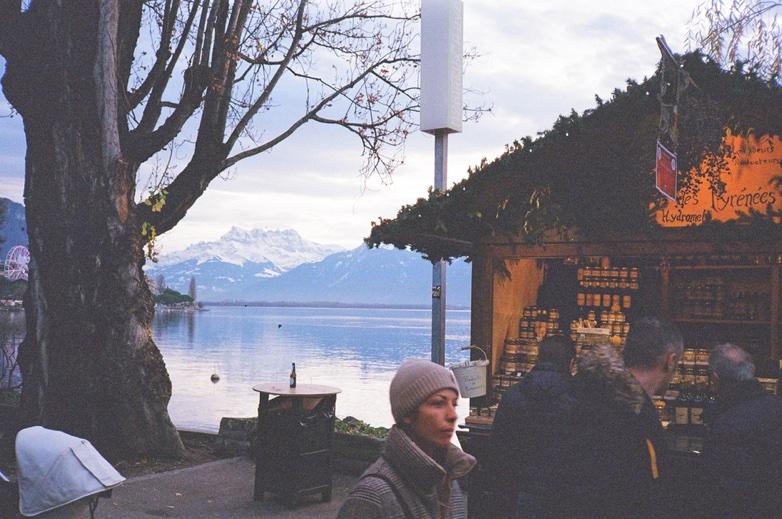
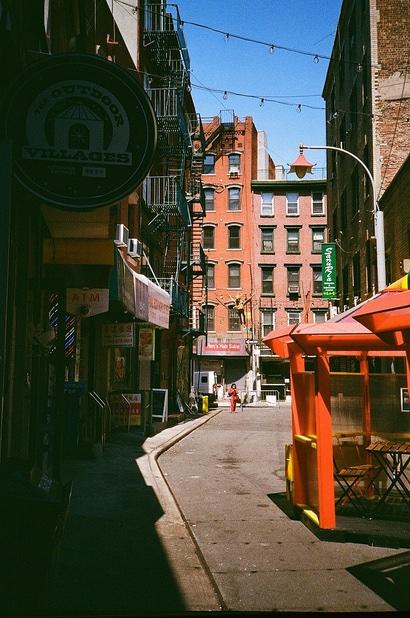
Mathilde Hainaut
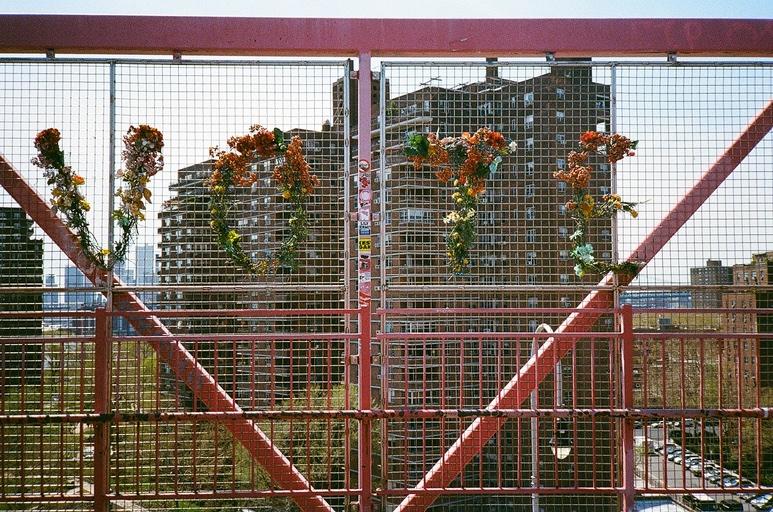
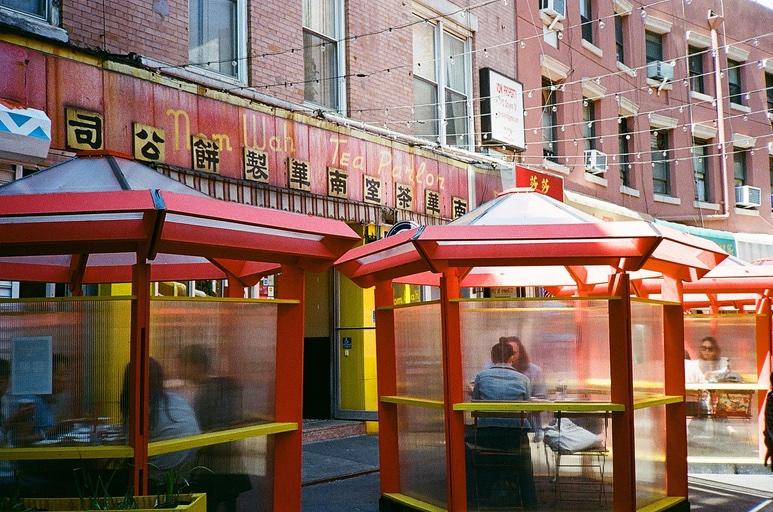


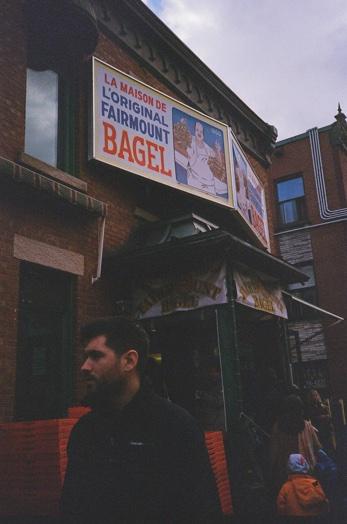

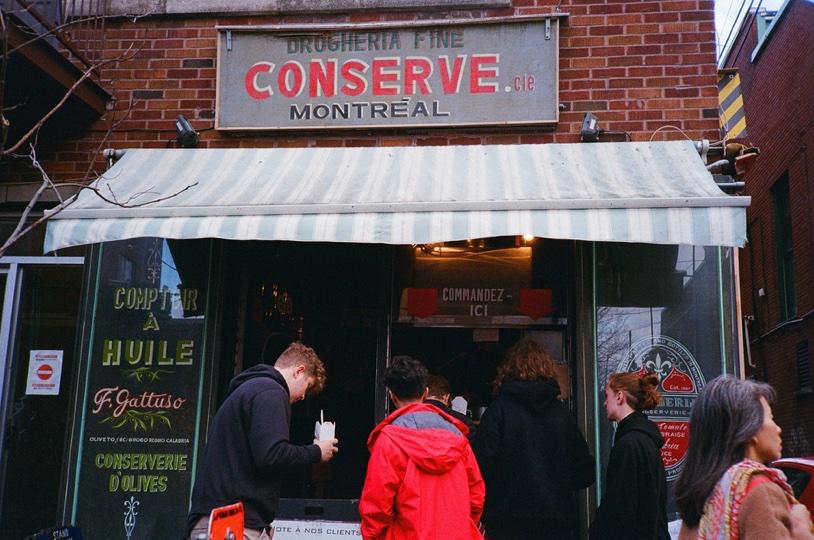

Sharron Wagner Patient Narrative
W hen I f irst met my new patient, she was not alone. She was rarely alone, in fact. Instead, her devoted middle-aged daug hter (clear blue eyes, blond hair, and pastel-clad from head to toe) greeted me at the bedside wi th a saccharine Minnesota accent. It was before 8 AM when I arrived to meet this new patient of mine, and I was met wi th a f lurr y. Daug hter pulls laptop from bag, greets her second grade Zoom class, offers me a Dunkin Donuts breakfast, all while rapid-f iring questions my way regarding her mother’s plan of care. This teacher-daug hter- turned-careg iver f lipped throug h pages and pages detailing her mother’s medical histor y. She spread out large, laminated placards wi th pictures of medications across the foot of the bed: color-coded and stickered wi th sparkly stars. Elementar y school teacher, she was indeed.
Mrs. F was admi tted to my team for hypertensive emergency, but she had also suffered a stroke the month before, leaving her a bi t unlike her normal self. She used to be razor-sharp, but now she’d lose her words in casual conversation. She lamented these losses in memor y and overall sense of self, thoug h she was still present, vi brant, and self-aware. Af ter three days of checking in on the pair the daug hter armed wi th her notebook scri bbled wi th medical jargon, doctors’ names, a laundr y list of her accumulated worries and concerns I f inally sat down to talk to Mrs. F about where life took her before she landed on our patient list. Of course, the daug hter was there too. And I would soon f ind out that the bedside was a familiar place for her, because decades before in a midsize Minnesota town, Mrs. F lived in the ICU for over half a year.
The daug hter recounted: herself as a 19-year-old freshman, receiving a cross-countr y call beckoning her back home. Mrs. F was driving home from an luncheon for the school where she worked as the principal, when she was hi t by an oncoming truck. She suffered a slew of injuries: crushed pelvis, massive blood loss. The daug hter f lew rig ht home. She didn’t even go back to college that year, choosing instead to work as a lifeguard at a pool located a quarter mile from the hospi tal, just so she could throw her sweatshirt on during lunch breaks and run to the hospi tal to visi t her mom in the ICU.
“And what about your dad?” I asked, cautiously
“He couldn’t really handle i t. I remember in the evenings he would come home to put the T V on and just stare at i t. Like an escape.”
“He was there more than you remember, dear.” Mrs. F turned to me. “It was hard for him to handle. He’s the stoic type.”
She was a typical outdoorsy, roug h-and-toug h, determined Midwestern woman. She was frail at her age, but her spiri t was buoyant and strong. Her family were campers, hikers, sailers, skiiers her German husband a practical man (‘emotionally repressed’, the daug hter chirps), a man she spoke of wi th fondness built from a life of companionship but not necessarily passion. W hen I asked how they got together, Mrs. F laug hed and looked out the window. “ We did not ‘fall in love’” she tells, gesturing air quotes wi th her long, slender f ingers. She descri bed a relationship that snuck up on an easy friendship A marriage built on shared campf ires and hiking trips, rather than drive-in movies and romantic dinners. Steadfast, hardy, practical. Like her.
We returned back to Mrs F’s seven months in the hospi tal:
“ There are some things you just remember so clearly,” the daug hter recalled. “Like staring in my closet, scanning the colors and dresses and blazers, thinking to myself that I don’t have anything pretty enoug h to bur y my mother in.
And then.. how will I go to the department store, if only to tell the saleswoman why I am there? Or sleeping outside in the hallway of the ICU. It was so much different then, you know?”
I thoug ht about this past year and the death of my grandpa how my mom, aunts, and uncle came together during his decline and eventual passing How they still created a solid support system to carr y each other and their mother throug h a time of grief, of transi tion.
“ That must have been so hard,” I said. “ Wi thout any si blings, I mean.”
Mrs. F turns to me, wide-eyed, to reveal another memor y. Yes, she had one child, but this was one more than she expected. Child at 24, hysterectomy at 28, endometriosis since puberty a legacy she passed onto her daug hter In that moment, the value each placed on the other a mother’s only child, a daug hter repeatedly f ig hting becoming motherless became abundantly clear
“How did you hang on for so long ?” I ask. “ W hy?” I tried to picture myself in her place and wondered what would keep me earthside, even af ter the doctors recommended hospice.
She turned to her daug hter and chuckled, saying she couldn’t leave her all by herself. She felt she needed her. Always steadfast, Mrs. F also descri bed her unwavering fai th and how i t kept her strong throug hout her months in the hospi tal.
“ We had a great support system throug h our church, school, the entire communi ty really W hile I was in the ICU, they broug ht them food, casseroles, condolences, ever ything. I was even in the newspaper!”
“ Yes, but ” the daug hter interrupts, “ They broug ht food the f irst month of so, but then eventually that all stops. But my mom was still in the hospi tal, and I was still here. You can’t blame them thoug h. No one can sustain that for months and months.”
Somehow, thoug h, i t did sustain her. She spent over half a year in the hospi tal af ter being ripped from her normal life During this time, she says her greatest long ings were as simple as a sof t breeze, a ray of sunshine, anything from the outside world She knew she wouldn’t be able to climb a mountain for a ver y, ver y long time. She couldn’t kayak on the clear Minnesotan lakes. She couldn’t zoom down a snowpowdered mountain. But she held out in the hope that one day, she could walk again amongst the trees.
In the end, I talked wi th them for nearly t wo hours. Throug h our conversation, I heard a stor y that would encompass the entire human drama life, death, family, uncertainty, fai th, loss of control, and hope. I learned a bi t more about how family dynamics can manifest in the face of crisis (most of all, the hospi tal) and how they are molded by decades of previous life experiences of which we are unaware. We [the providers] rarely have the opportuni ty to explore these powerful inf luences and motivators And so, the best we can do is meet their anxieties and idiosyncrasies wi th compassion and wi th grace The irony of her stor y also struck me. Wi thin our palliative care experiences in the hospi tal, we learn a lot about teaching families how to let go. Here, thoug h, was a tale of holding on. I ’m not sure that Mrs. F stor y would have unfolded the same if i t happened in 2021. But I ’m g lad that she is still here, for the sake of her daug hter, her husband, but also for me, so that I too could learn from her.

A Leap of Faith
by Dr. Gauri Agarwal
Ten years ago, I had the good fortune of being able to see patients on Monday afternoons at a health department clinic along with third year medical students. We would have just a few patients that were directed to us if they did not already have an established primary care physician at the clinic. We spent luxurious afternoons in which the students would spend hours poring over histories, completing detailed exams, perfecting their oral presentations, and coming up with detailed management plans. The students hit a hard stop with Mr. Thomas. He had just been released after being incarcerated for an unknown crime and had come to the clinic as he needed a physical exam for his work program. He did not want to answer many questions and was not thrilled about the physical exam. He had a history of diabetes but refused laboratory testing and told us directly that he did not trust what we would do with the results. We were able to convince him to at least check his blood pressure and it was significantly elevated. We convinced him to come just once more the following week. When I walked into the clinic the following week, I smiled when I saw him, and he smiled in return. He seemed surprised to see me again and said he had expected to see someone new. I told him I was there every Monday afternoon, and I would be there as long as I was needed. We gained a few more details that afternoon. He told us that he was a stand-up comic and that he had a gig at the local Improv the next weekend. At the end of the visit, he agreed to laboratory testing. The results were what one might expect from untreated diabetes and hypertension. Within a few more visits, he agreed to medications, and within a few months, he had become a regular patient of mine. Visits with Mr. Thomas were always full of laughter, and he was eager to teach the students. As there was always a new batch of students, I became used to his repertoire of jokes as they tried to visualize his fundus or check sensation on the bottom of his feet. He would tell me about trying to paint and ask me about my cooking. I would share stories about my children, and he would tell me about times he had spectacularly bombed on stage.

A few years passed, and as I walked into the clinic one afternoon, the clinic manager alerted me to a message I had received from a local hospital regarding Mr Thomas I called the nurse who had left the message. He had apparently been admitted with a myocardial infarction. The initial EKG revealed ST elevations in all of his anterior leads. He had been on his way to the cath lab, but he had adamantly refused the procedure. He was subsequently taken to their cardiac intensive care unit, but he had pulled out his IV and walked out of the hospital. As he had listed me as his primary care physician, they were notifying me of the event As I was speaking on the phone, the clinic manager notified me that Mr. Thomas was currently in our waiting room. He had walked out of the hospital, taken two buses, and walked to the clinic in the middle of having a heart attack. I immediately brought him into a room to speak to him and perform an EKG. He told me he was not about to have a procedure done by people he did not know or trust. I tried to explain the gravity of his situation, and that his EKG showed very concerning changes I told him I would need to call an ambulance He told me he would only go to a hospital where I had privileges. When the paramedics arrived, they told me their protocol was to take him to the closest hospital. I tried to explain this to Mr. Thomas, but he refused and said he would only go to the further one so that I could continue to check on him. I signed some papers indicating that I was taking responsibility for the change in their protocol. I called the emergency department and spoke to the interventional cardiologist on call I told them his background and explained his particular needs and beliefs. Later that evening, I received a call from the cardiologist that Mr. Thomas had arrived by ambulance, but they had difficulty placing an IV. They had tried multiple times, and had been about to place an intraosseous line, when he refused further care and left the emergency room.
I called Mr Thomas’s cell phone but was unable to reach anyone For a week, I tried repeatedly to call, and called the police to do a wellness check at the only address we had on file. The address was a men’s group home, and they were unable to locate him. The subsequent Monday afternoon, I walked into clinic with my students and saw him waiting for me in the lobby. He told me he knew I had been looking for him, but he needed time. He told me that when he had entered the emergency room, he felt like an animal at a slaughterhouse, as they poked and prodded him with needles He heard comments that he must have been a drug abuser because “all of his veins were shot”. He told me he didn’t want them touching him and he had not picked up the phone because he knew I would have convinced him to return.

I told him he needed immediate attention and that his life was in danger. I called emergency services again, but this time, I promised him I would follow in my own car. I made it to the emergency room along with the students at the same time as the ambulance, and we remained with him throughout his time in the emergency room, until he was taken for his catheterization. He had an apical thrombus and multivessel disease that required bypass grafting On the journey to get his coronary bypass graft surgery, there were two more times in which he left against medical advice. He told me that he had been at this hospital many years prior, and the team had recommended an amputation of one of his toes. He had gone to a different hospital where they had done a simple incision and drainage, and he had recovered full use of his toes. He had felt like a recommendation had been made to remove a toe with remarkable casualness, when it was not necessary It was easy to see his logic and understood his hesitation for a much more complicated surgical recommendation. Ultimately, he took a leap of faith and placed his trust in the team. He did well after the surgery for many years.
I eventually stopped seeing patients at that clinic as our medical school changed clinical sites, but I continued to stay in touch with Mr Thomas He would send me periodic updates about his work at a barbershop, jokes he was trying out, or images of paintings. He asked to speak to me one afternoon about something that was on his mind. He told me that he had made a decision to donate his body to science and wanted to know about the process. He told me he had always enjoyed teaching the students and he wanted to continue to do so in his death. This man who had hesitated to allow us to even auscultate his heart during our first encounter was now offering his entire body. This man who had repeatedly discarded the lines and tubes we had inserted in order to escape our care was now willing to be tethered to the way of science. This man with nothing was giving everything he had left to give. I was struck by this profound metamorphosis and deeply moved by this last act of faith.

T H E E N D

University of Miami
Miller School of Medicine
Published 2025
